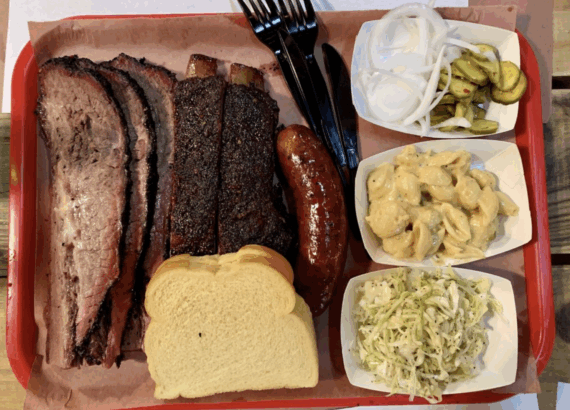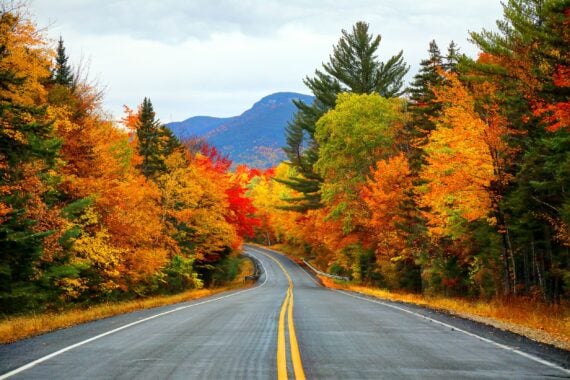Famed landscape architect Frederick Law Olmsted said every city should have a large park for “unbending of the faculties.” He designed some of America’s most famous, beginning with New York City’s Central Park and continuing in 30 other cities.
“Urban residents love street life but tend to realize that they’re locked away from nature, where man began before cities existed,” says Dan Biederman, lead consultant for the planning, operation, sponsoring, and programming of Houston’s new Levy Park. “And they miss it.”
With that in mind, here’s a look at some of the most notable urban parks across the country, including a relatively new spot in Greensboro, North Carolina.
LeBauer Park
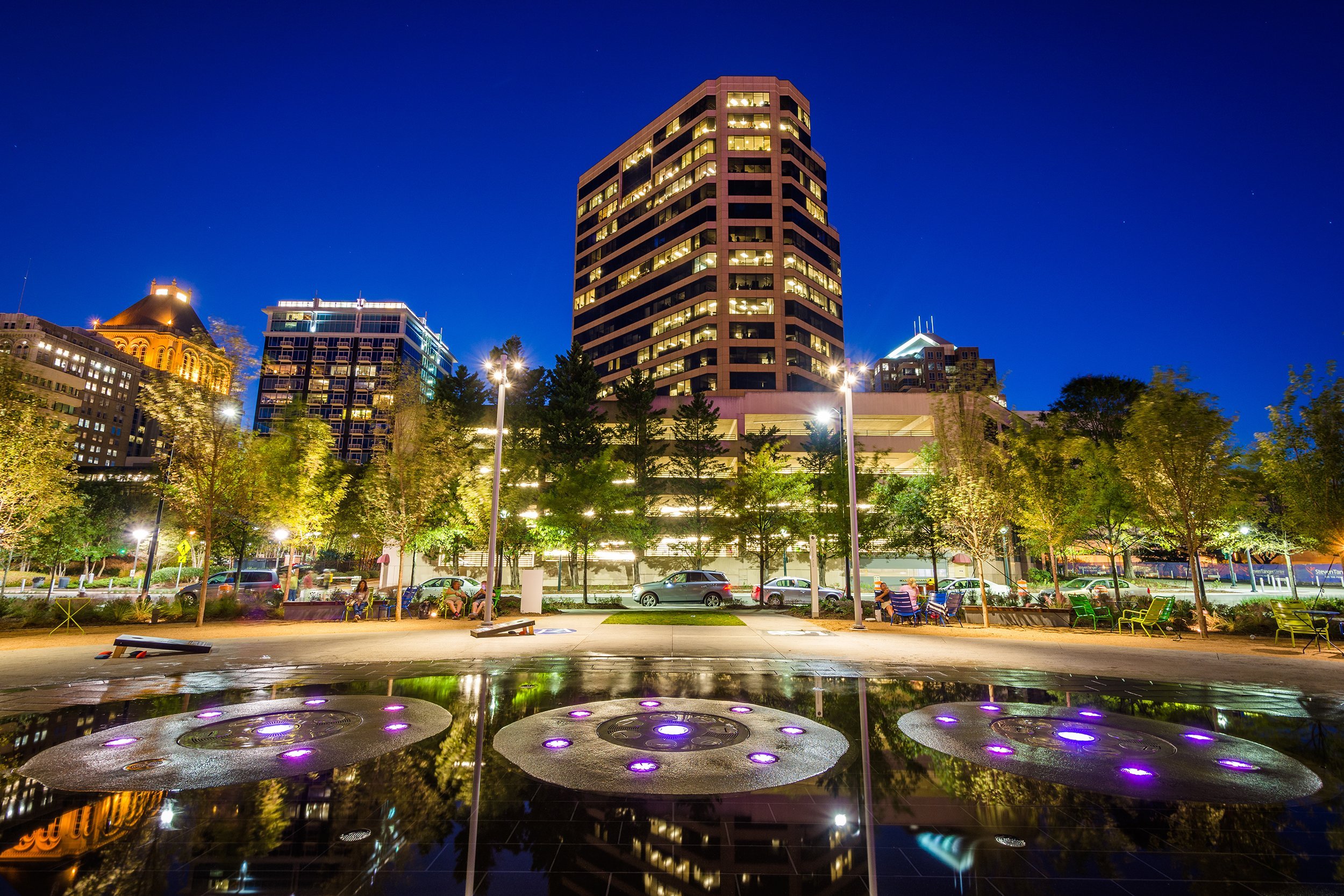
Greensboro, North Carolina
When she died in 2012, prominent Greensboro resident Carolyn Weill LeBauer left $10 million for the creation of a spectacular city park. The 4-acre park created in her name includes a 17,000-square-foot event lawn, a children’s park, a putting green, more than an acre of ornamental gardens, and a market area.
Don’t Miss: Carolyn’s Garden, a 1-acre plot of gardens that is perfect place for studying or just taking a break surrounded by LeBauer’s favorite foliage.
Continue reading to see what urban oases can be found in other cities.
Smale Riverfront Park
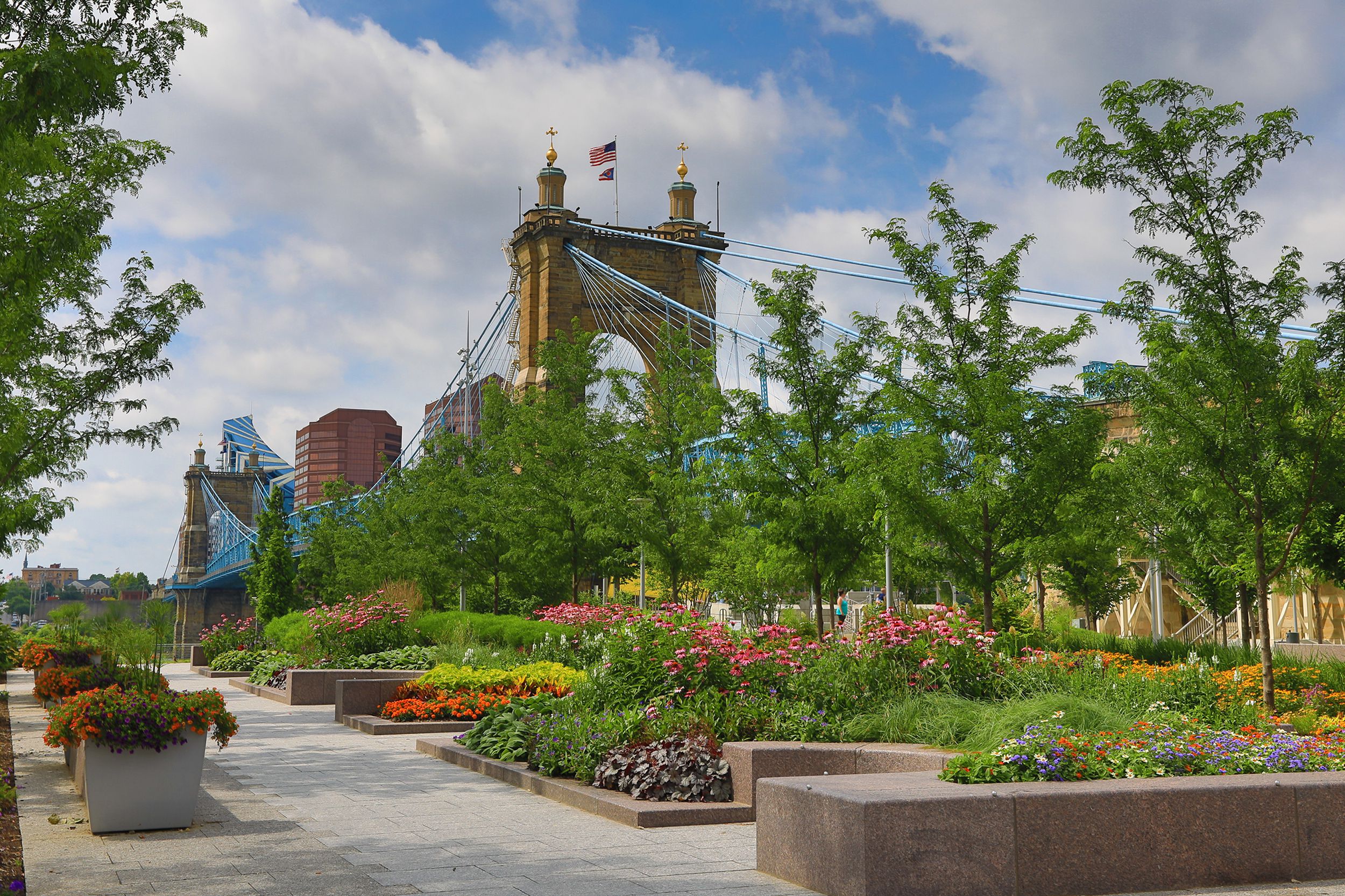
Cincinnati Planning for “Cincinnati’s front yard” started in 1997 and the first phase opened in 2012. Features continued to open through 2015, revitalizing the city’s historic riverfront. The 45-acre park includes an esplanade for farmers markets, a garden with oversize swings facing the river, a rose garden, and a labyrinth for walking and meditation.
Don’t Miss: The P&G Go Vibrantscape, a play area incorporating sound, water, light, and movement.
Romare Bearden Park
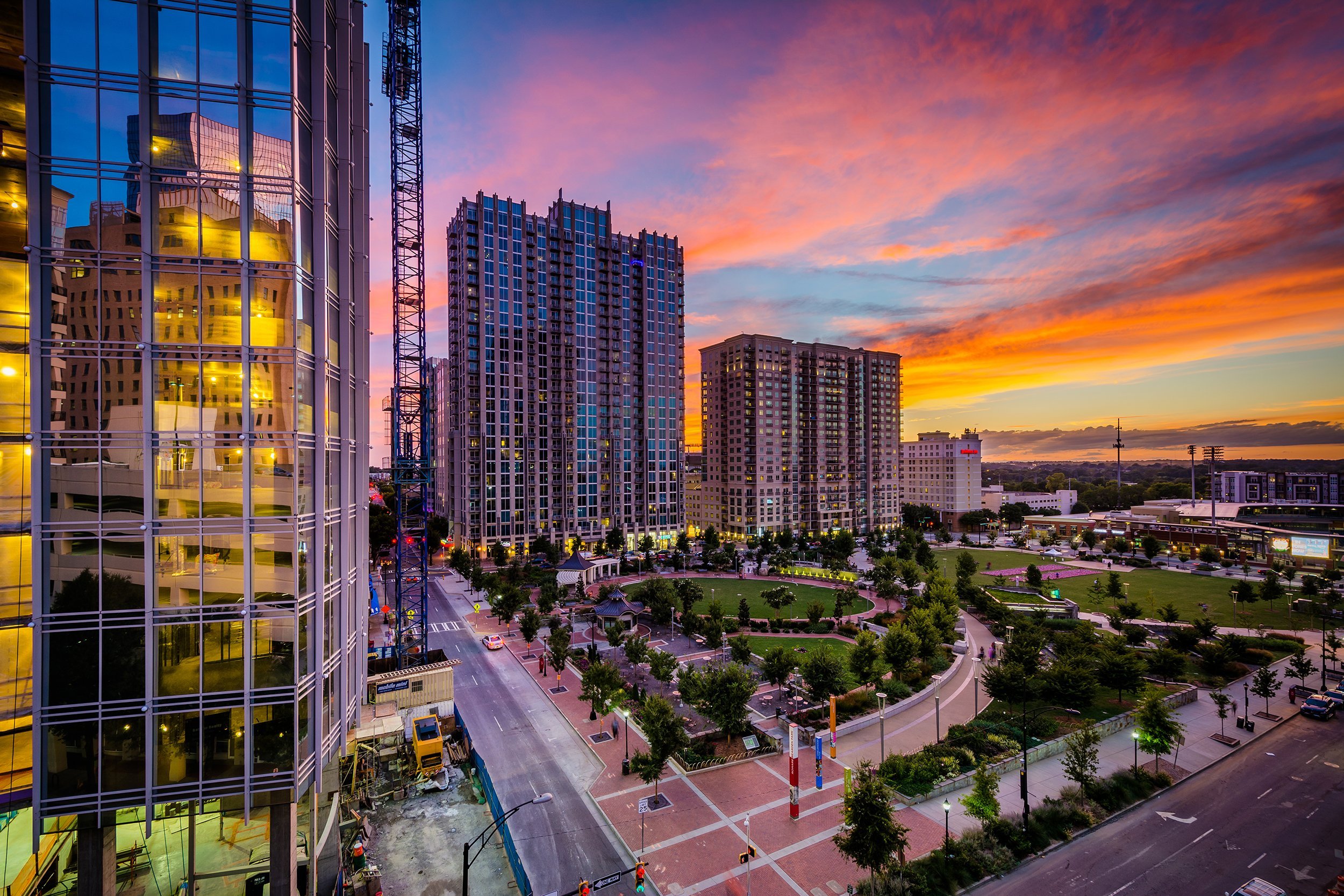
Charlotte, North Carolina A 5.4-acre green space inspired by the artwork of Charlotte-born artist Romare Bearden, this park opened in late 2013 with water features, picnic areas, gardens, and a play area with interactive digital chimes and waterfalls.
Don’t Miss: The park’s famous wall of waterfalls, which sets the stage for breathtaking views of the Charlotte skyline.
White River State Park
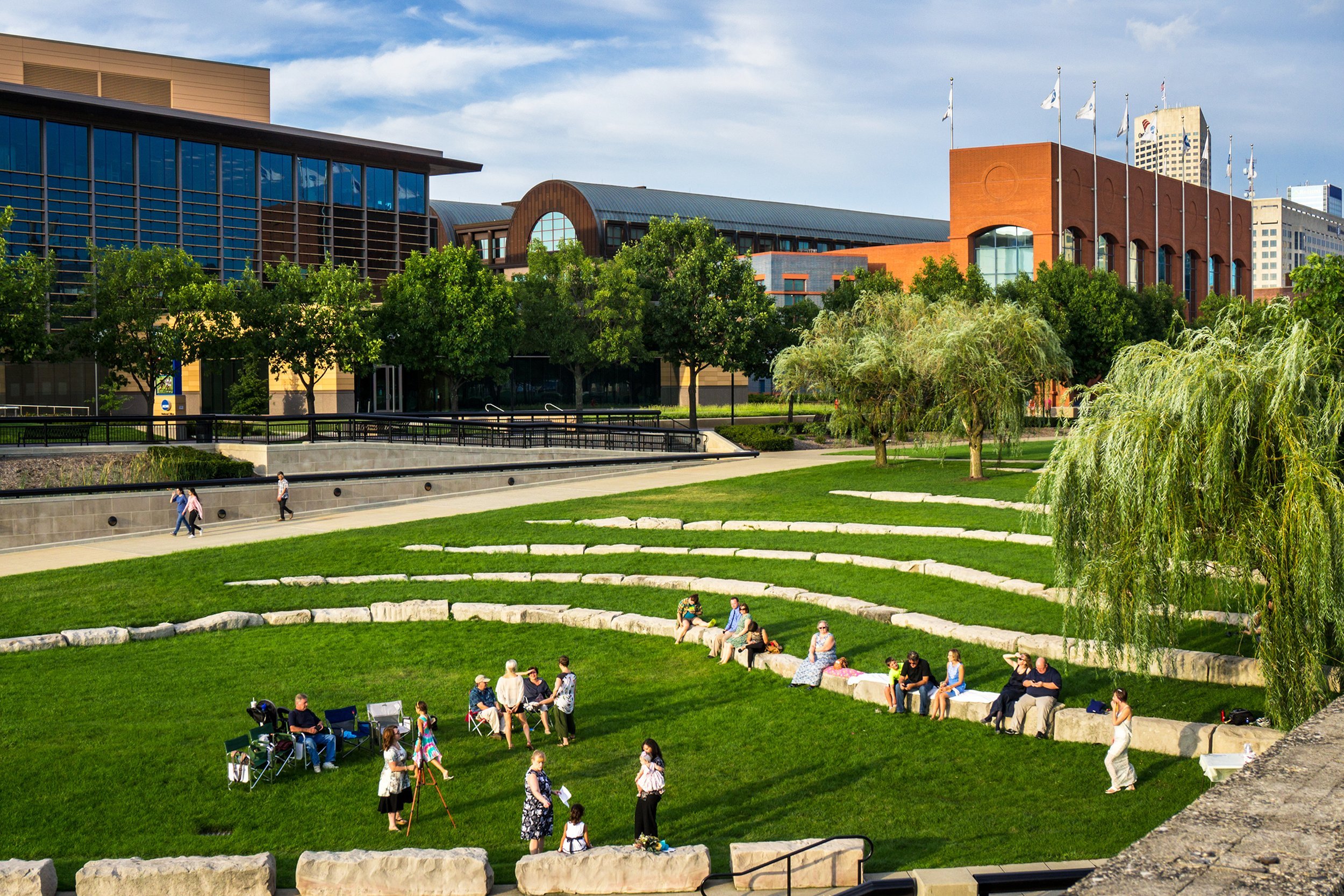
Indianapolis This urban state park, one of the nation’s largest, brings 250 acres of green space, seven major attractions, and a scenic canal into the heart of downtown. Among the cultural offerings are the Indianapolis Zoo, the Eiteljorg Museum of American Indians and Western Art, an IMAX theater, and the Indiana State Museum. Outdoor activities include a 6,000-square-foot slow-food garden, a children’s maze, and the Governor’s Lawn, which hosts live entertainment.
Don’t Miss: A gondola ride, with gondoliers singing in Italian while coasting along the Central Canal.
Fairmount Park
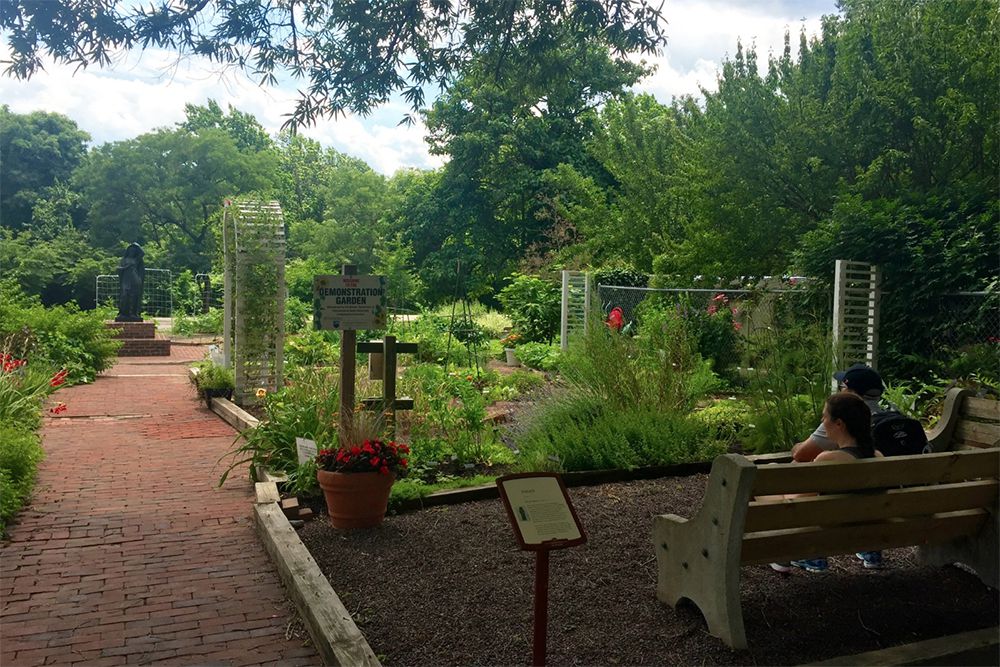
Philadelphia Fairmount Park seems to offer something for everyone among its 9,200 acres, which straddle the Piedmont Plateau and Inner Coastal Plains: miles of trails for horseback riding, hiking, or off-road cycling; pier-side fishing; outdoor concerts; and three environmental centers. The world-renowned Philadelphia Museum of Art acts as a park gateway.
Don’t Miss: The colonial mansions dotting the landscape — this was an elite neighborhood during the American Revolution. They can be viewed via walking tour or trolley. The Victorian-era boathouses have become architectural landmarks.
Trending on Cheapism
Highland Park
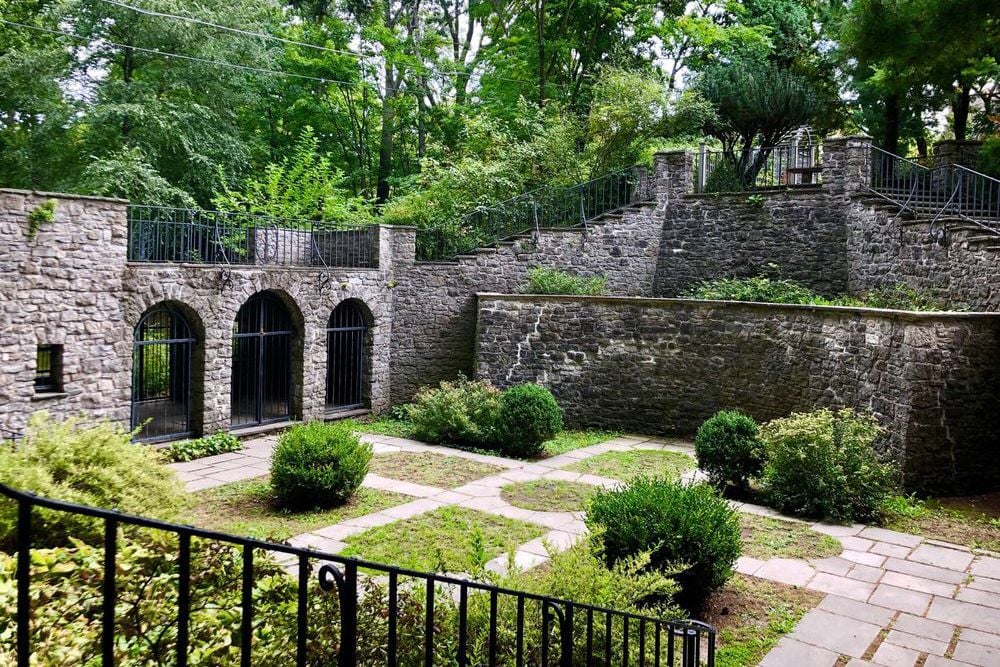
Rochester, New York Designed by Olmsted himself, 150-acre Highland Park, became Rochester’s first city park in 1888. It is home to America’s largest collection of lilacs, and the Rochester Lilac Festival each May, but also magnolia, rhododendron, and azalea collections, along with beds of tulips and other flowers. There’s a Vietnam Veterans Memorial Garden, AIDS Remembrance Garden, and romantic Poet’s Garden.
Don’t Miss: The 1930 Sunken Garden, a hidden treasure behind the gothic Warner Castle (which is also worth a visit).
City Park
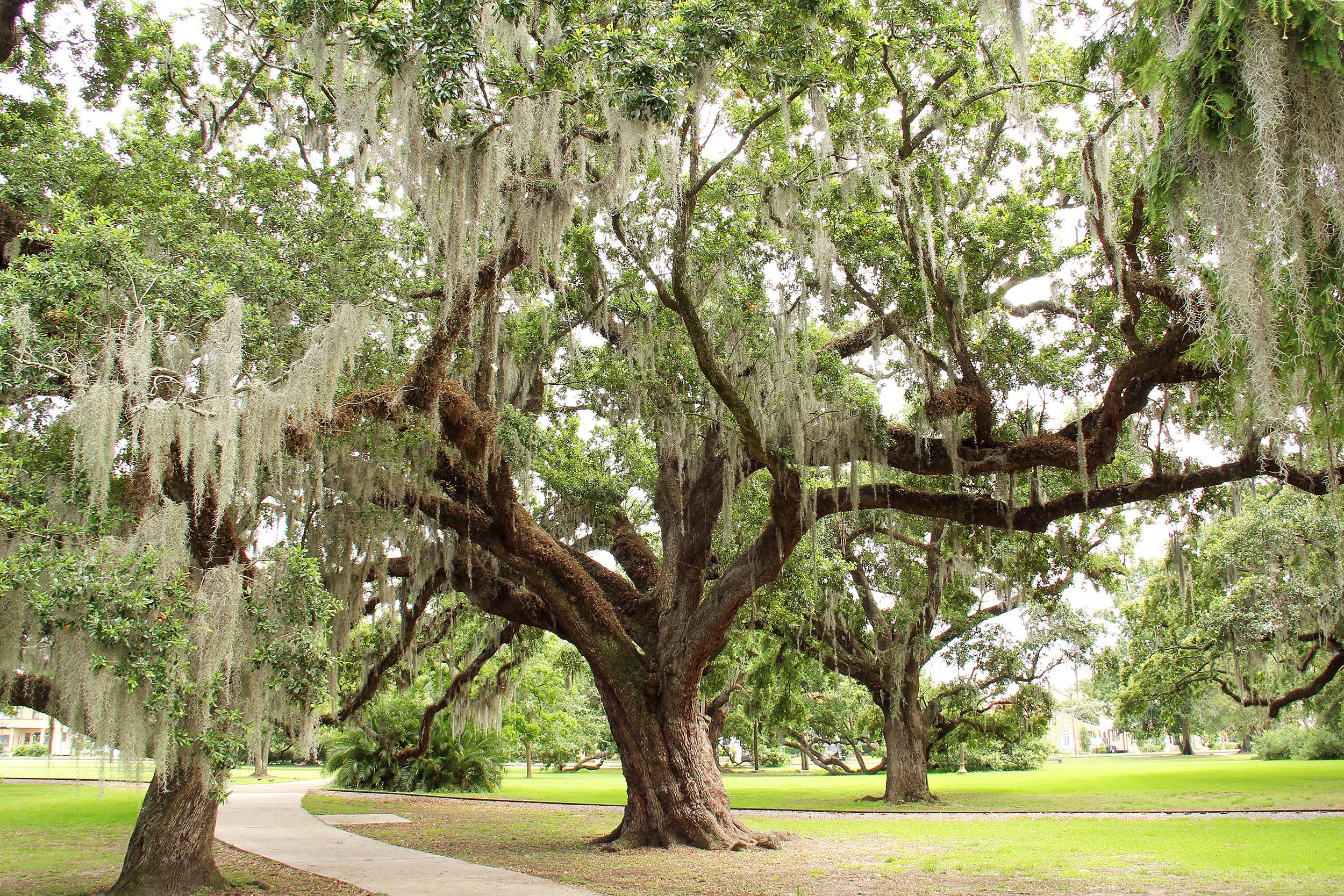
New Orleans New Orleans’ 1,300-acre City Park is one of the oldest urban parks in the country. Created in 1854, it has the colorful distinction of being the site of generations of gentlemanly duels or affaires d’honneur. These days, top attractions include a botanical garden, an amusement park, an open-air sculpture garden, sprawling green spaces, and biking, jogging, and walking paths.
Don’t Miss: The oldest stand of mature live oak trees in the world, including the grand McDonogh Oak, nearly 800 years old.
Golden Gate Park
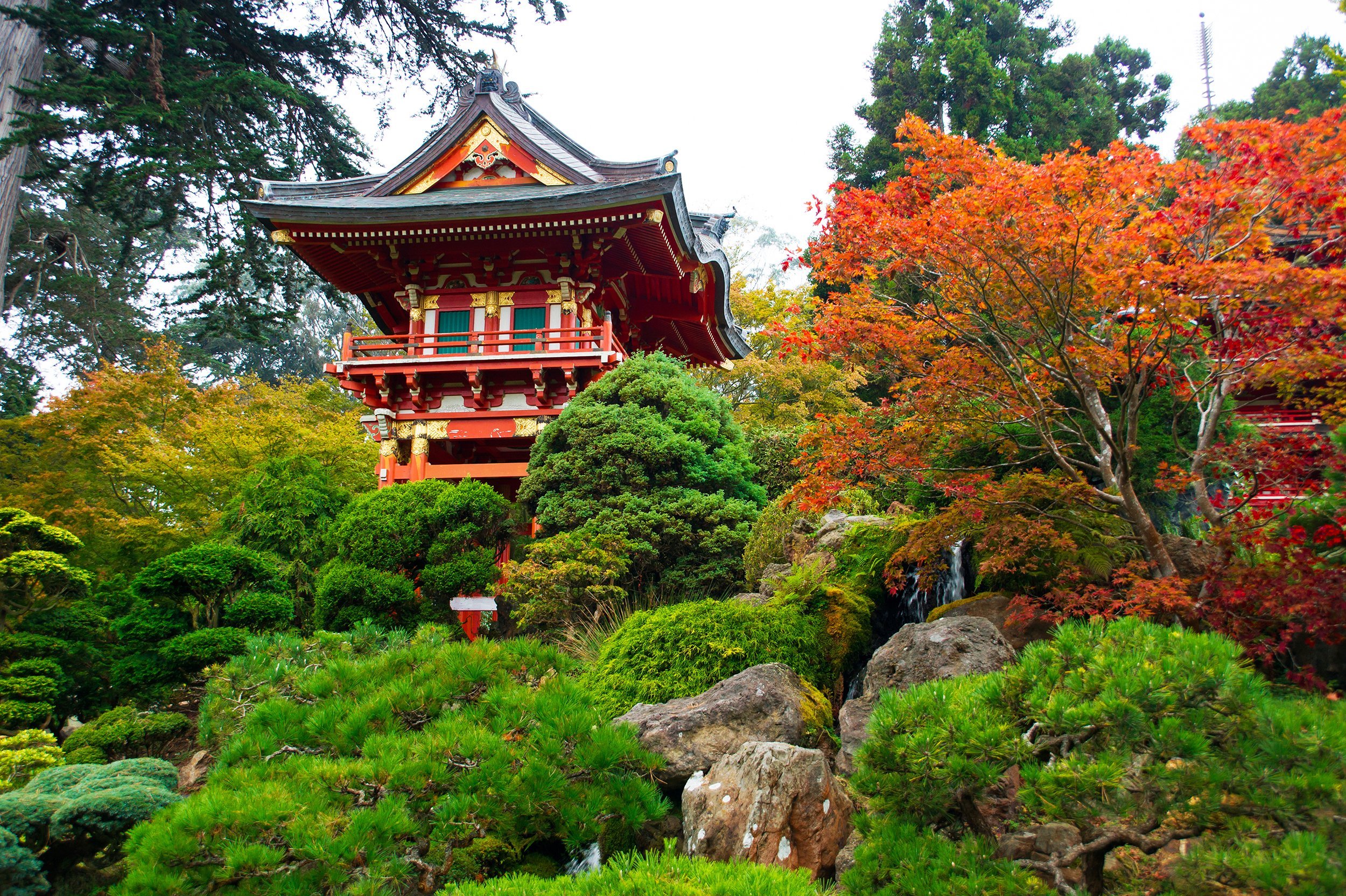
San Francisco Golden Gate’s 1,000-plus acres — more than Central Park — include the de Young Museum, Japanese Tea Garden, and Golden Gate Park Aquarium. There are also numerous sports areas for everything from basketball to Frisbee golf.
Don’t Miss: The Buffalo Paddock, home to a herd of American bison.
Sign up for our newsletter
Scioto Audubon Metro Park
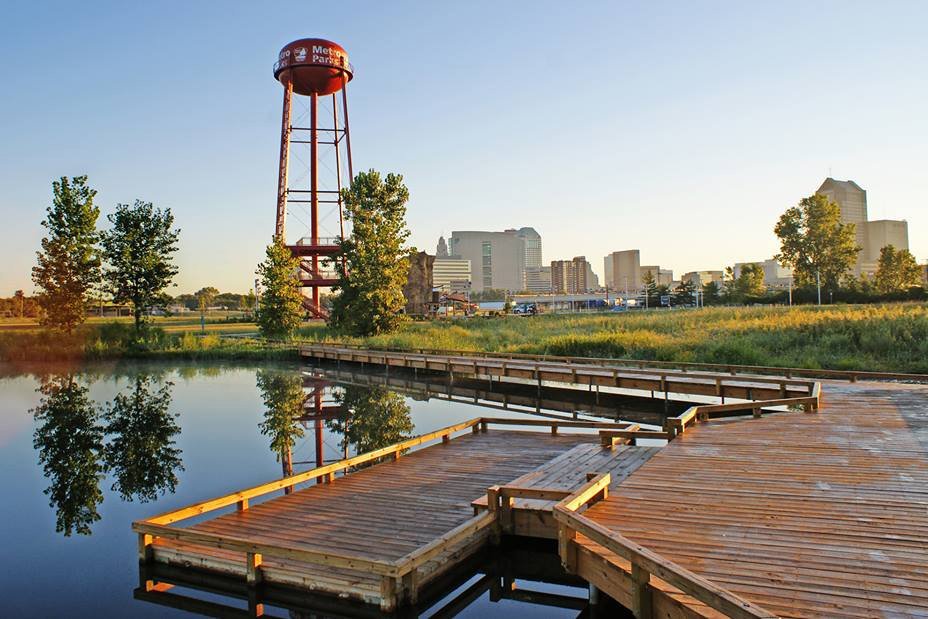
Columbus The 120-acre Scioto Audubon opened in 2009 to bring nature to the once industrial landscape of Ohio’s capital city. Today the park is described as a green oasis where wildlife and birds thrive. Boating, biking, fishing, and picnicking are just some of the options here.
Don’t Miss: The giant, outdoor climbing wall, which includes three towers and two arches reaching a height of 35 feet, for a total 6,100 square feet of climbing space. There are smaller, 10-foot boulders for little ones.
Queen Kapi’olani Regional Park
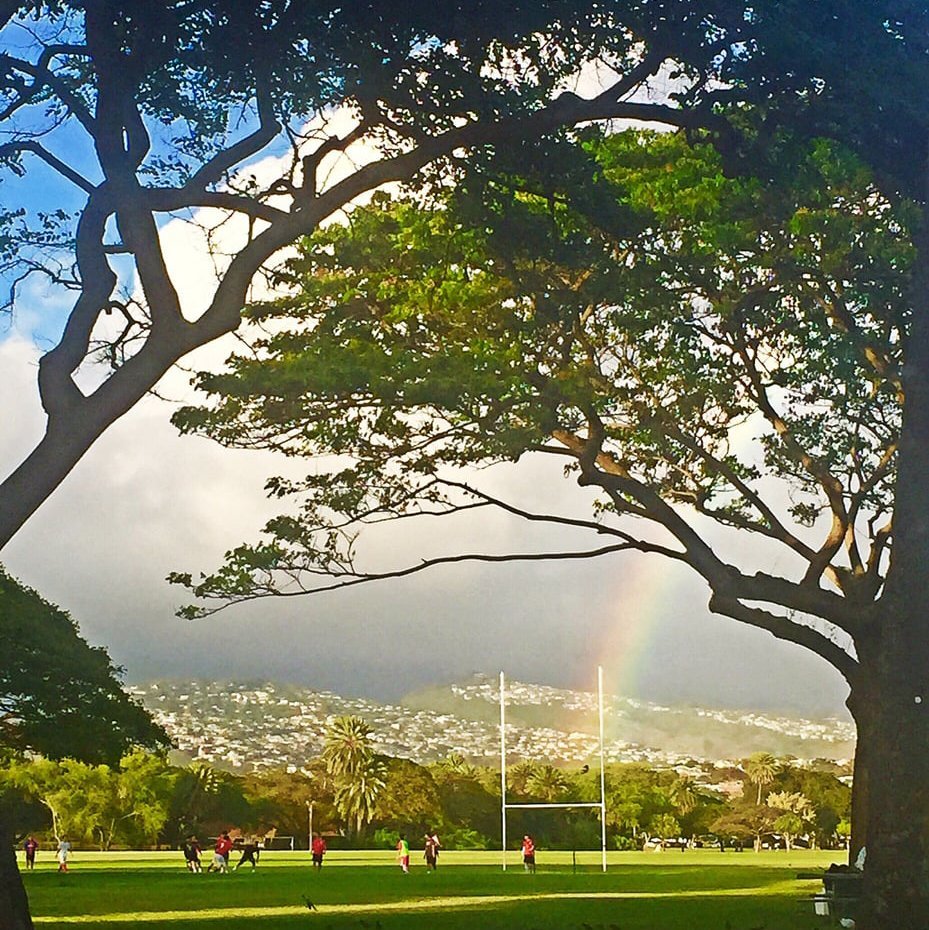
Oahu, Hawaii It may be hard to imagine a need for more greenery in Hawaii. But Queen Kapi’olani Regional Park, in busy Honolulu, offers a respite from high-rises and urban sprawl. Within the 300-acre reserve are spaces for tennis, baseball, soccer, and rugby. The Waikiki Shell hosts musical performances and festivals. And nature lovers can watch the park’s many birds, including red-crested cardinals.
Don’t Miss: Sunday performances by the Royal Hawaiian Band at the park bandstand.
Klyde Warren Park
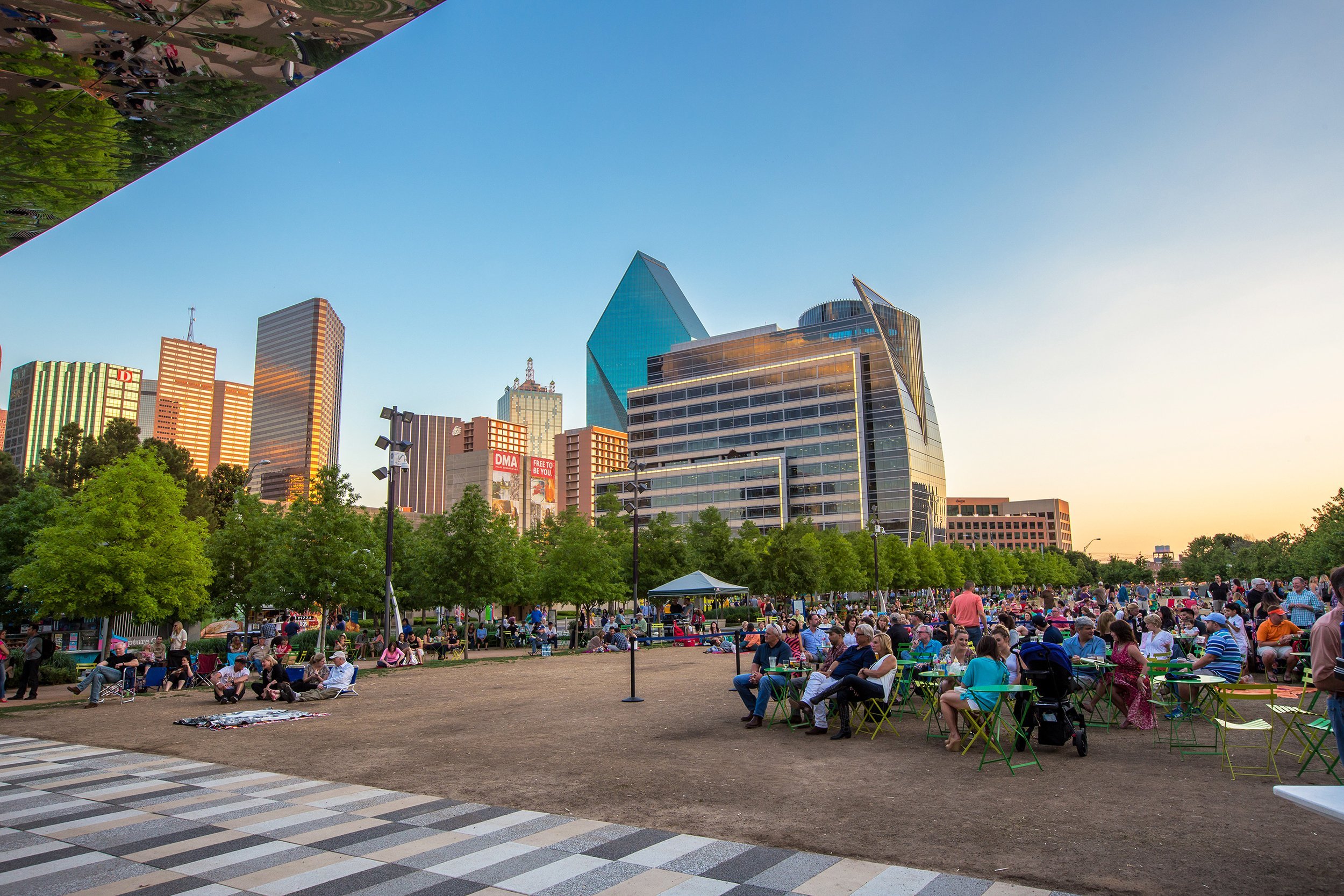
Dallas Built atop the recessed Woodall Rodgers Freeway, Klyde Warren Park is a central gathering place uniting a once-divided city. In addition to walking trails and play areas, the 5.2-acre park offers daily free programming ranging from yoga and lectures to outdoor concerts and films.
Don’t Miss: The smorgasbord of food trucks that descends on Tuesdays.
Military Park
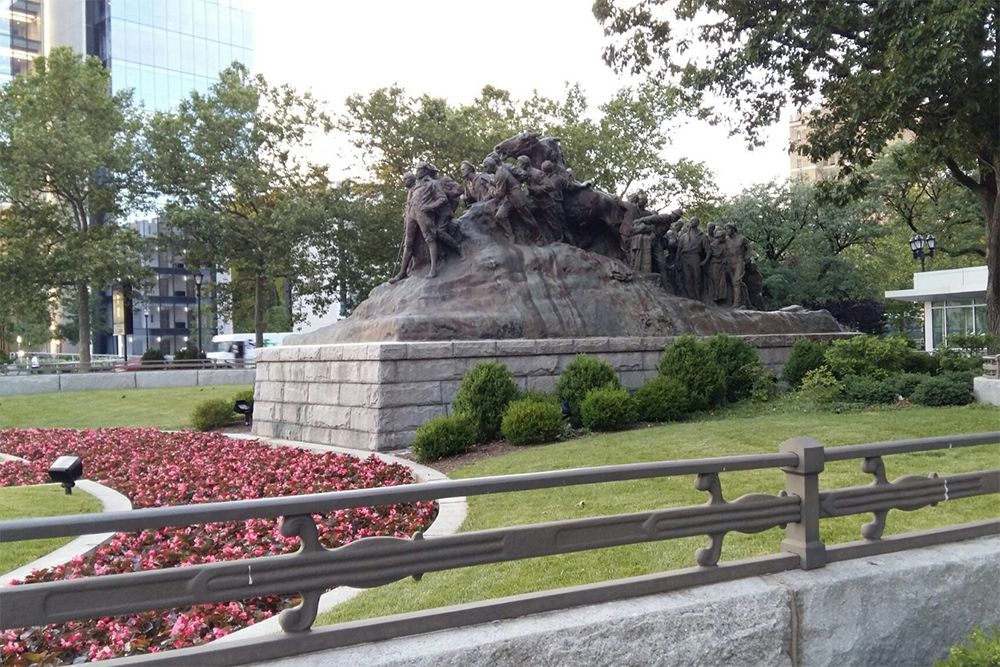
Newark, New Jersey Military Park dates back to 1667. It was used as a French and Indian War training ground and a campground for George Washington’s troops. Over the years the 6-acre park fell into disrepair, but since a yearlong renovation begun in 2013, Military Park is considered a key part of the renaissance of downtown Newark. It hosts public art and weekly activities, including more than a dozen fitness programs, nearly two dozen arts and culture programs, and about eight children’s programs.
Don’t Miss: The “Wars of America” monument by Gutzon Borglum (best known for Mount Rushmore). The 1926 monument consists of 42 bronze figures representing soldiers and civilians from four wars.
Levy Park
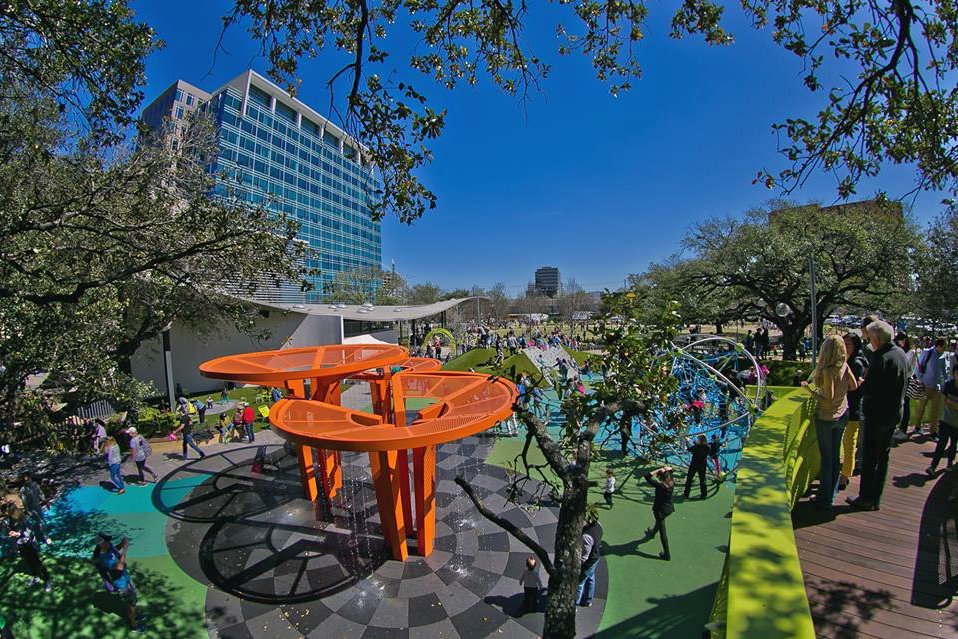
Houston The 6-acre Levy Park recently underwent a multimillion-dollar renovation. Located in the heart of Houston, the park now includes a performance pavilion, a promenade, two large lawns, community gardens, a games and reading area, and a dog park.
Don’t Miss: The children’s playground, which has become one of the most popular attractions in the revitalized park. Drawing families from all over Houston, the sprawling playground features a climbing wall, a 7-foot-tall slide, a treehouse, and interactive water features.
North Shore Riverfront Park & Trail
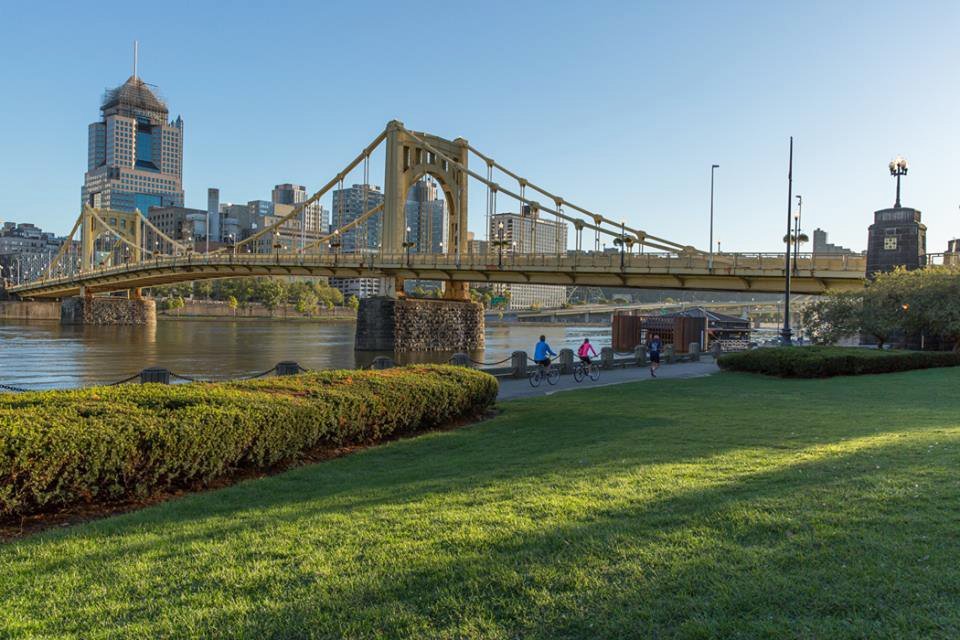
Pittsburgh With its Great Lawn, Market Street Pier, and Water Steps Fountain, Pittsburgh’s North Shore Riverfront Park is a hub of activity. The result of a $35 million revitalization effort, the 11.3-acre park includes expansive, well-manicured lawns crossed by walkways and decorated with public art. The park also hosts outdoor concerts regularly.
Don’t Miss: The sandstone Water Steps, a favorite place for children and families on warm days. They provide a stellar view of the city across the river.
Maggie Daley Park
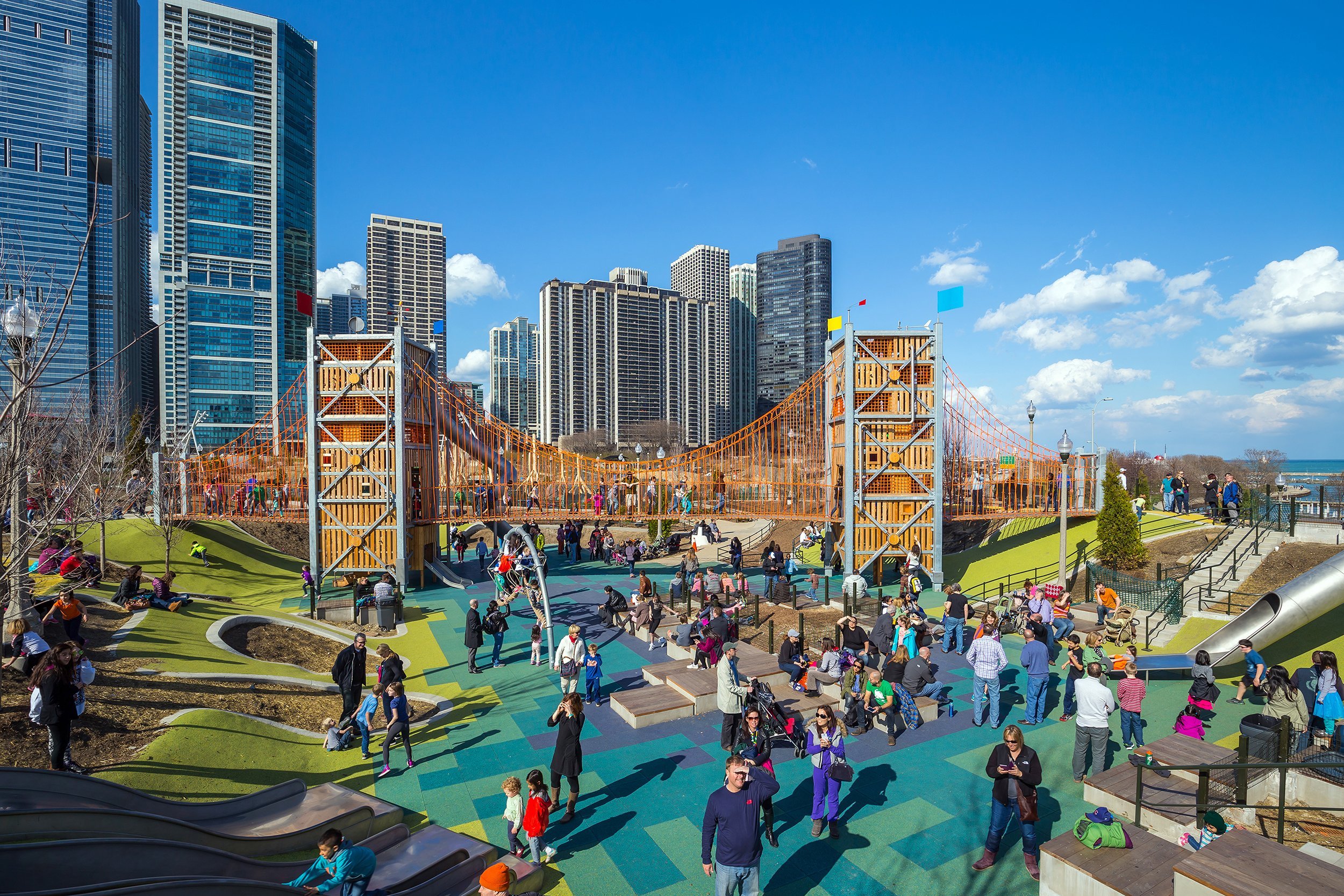
Chicago The design of this park began in 2009 with the input of thousands of citizens in community workshops and meetings. The result is a dynamic green space with picnic groves, climbing walls, a 3-acre children’s playground inspired by “Alice in Wonderland” and “Charlie and the Chocolate Factory,” tennis courts, mini-golf, a sculpture garden, and a Cancer Survivors’ Garden.
Don’t Miss: The Enchanted Forest, a 3,590-square-foot network of pathways and play zones created to inspire imaginative play and sensory exploration.
The Battery
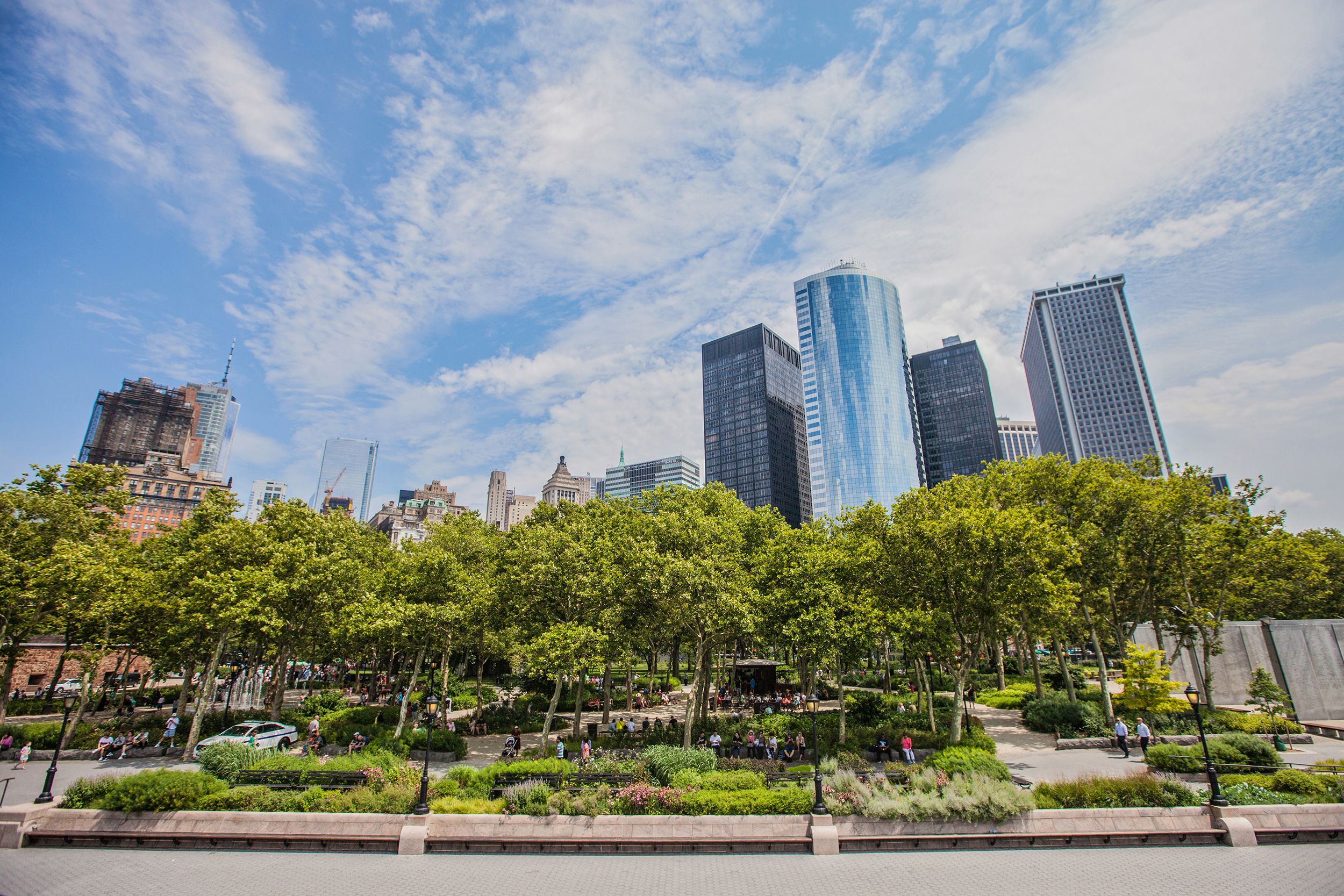
New York City At the lower tip of Manhattan, the Battery (formerly Battery Park) doesn’t have the same profile as famed Central Park. But the 25-acre park at the confluence of the Hudson and East rivers is the largest public open space downtown. It features gardens, an urban farm, a waterfront promenade, and a “labyrinth” path created to mark the one-year anniversary of the Sept. 11 attack on the World Trade Center.
Don’t Miss: The whimsical Seaglass Carousel at the park’s southern end, designed to conjure the Battery’s history as the first home of the New York Aquarium.
Carroll Creek Park
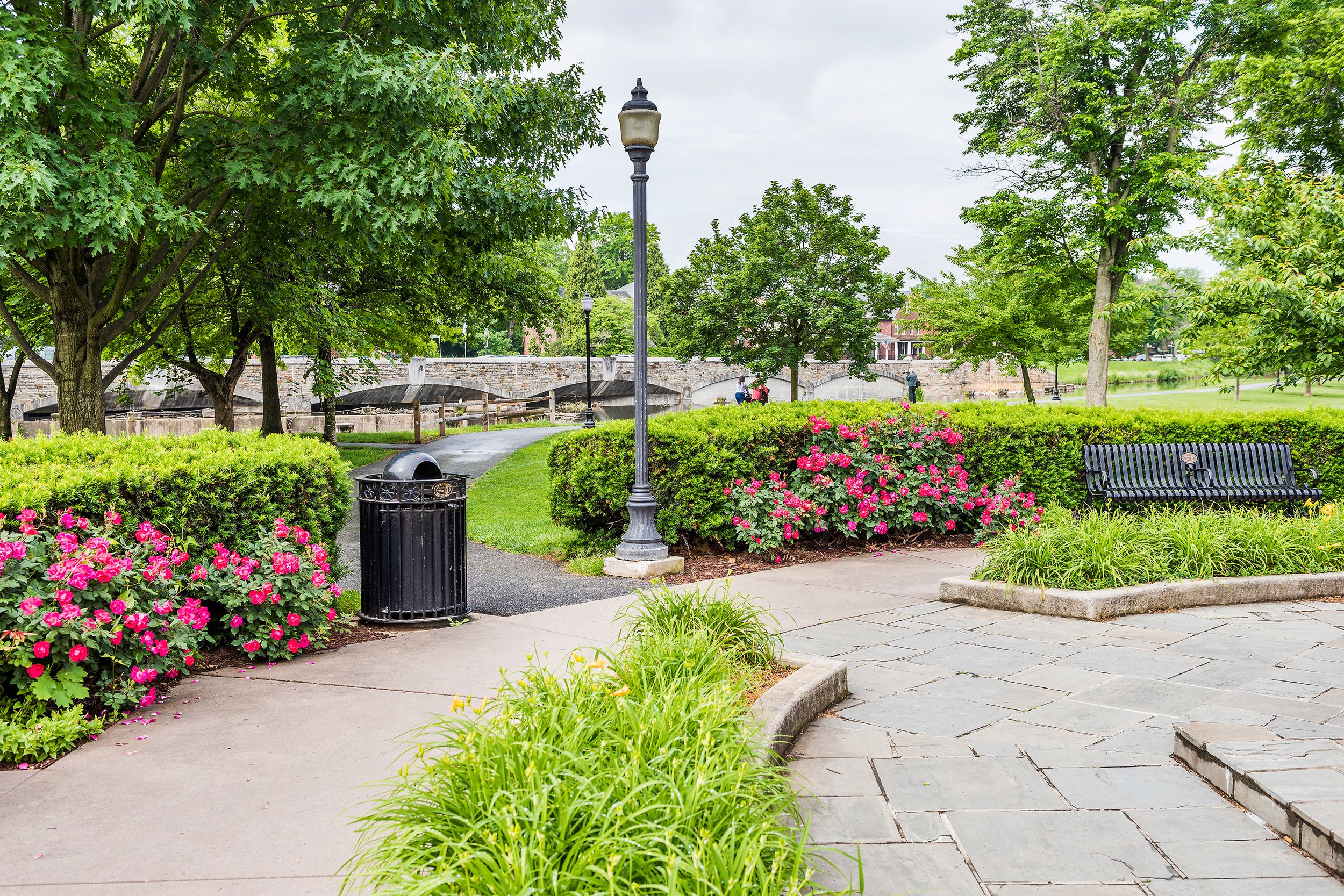
Frederick, Maryland Begun in the 1970s as a flood control project after rain caused hundreds of thousands of dollars in damage to area businesses, Carroll Creek Park is one of Frederick’s most popular attractions. The 1.3-mile linear park includes brick paths, bridges, a 350-seat amphitheater — and, of course, water features.
Don’t Miss: The trompe l’oeil Community Bridge Mural, which transforms a simple concrete bridge into the illusion of an old, ivy-covered stone bridge.
Balboa Park
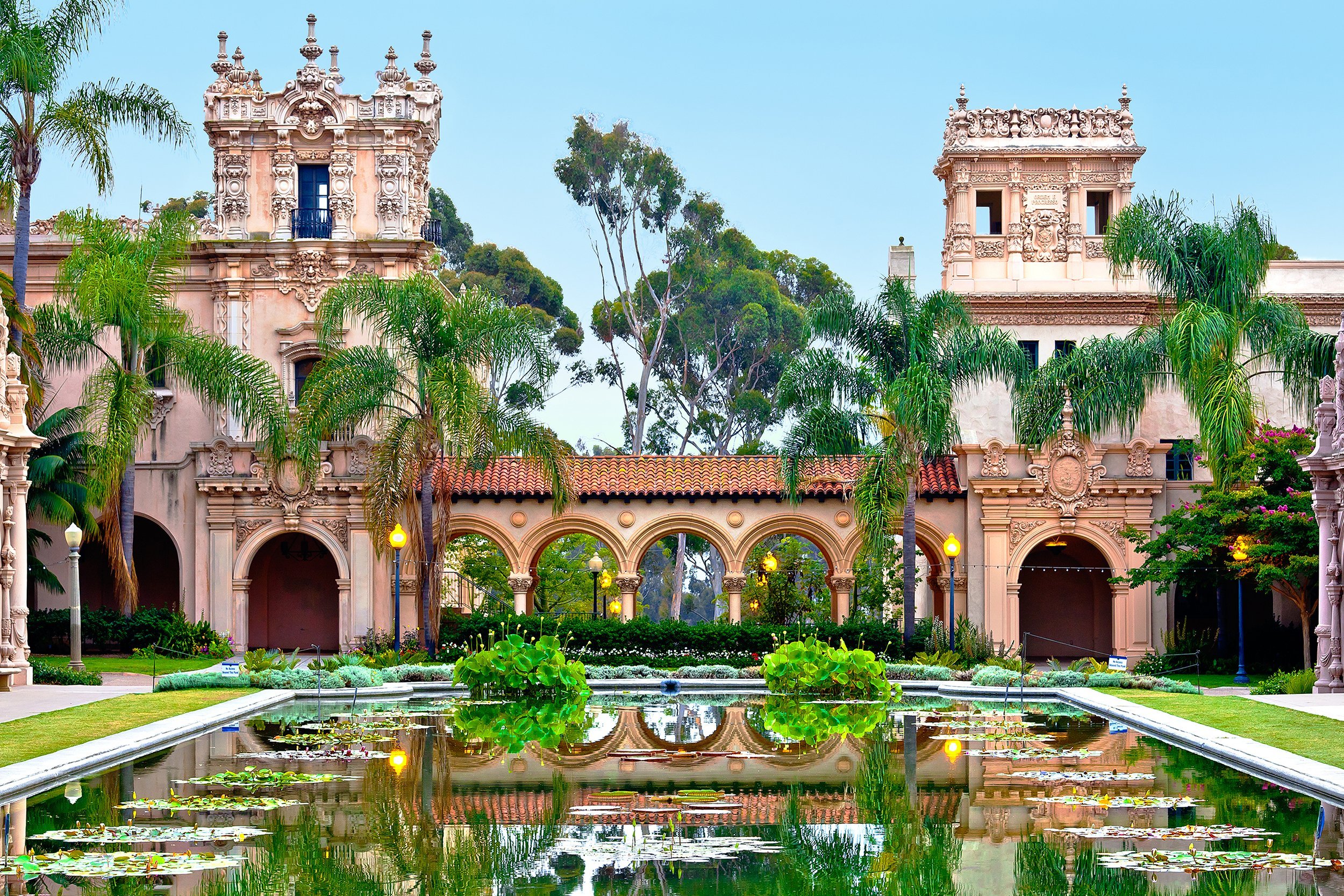
San Diego Balboa Park is to San Diego what Central Park is to New York City — an immensely popular gathering spot with world-class museums, water features, playgrounds, hiking and biking trails, a dog park, an amphitheater, formal gardens, and restaurants. And that’s just the start for this award-winning 1,200-acre park, a National Historic Landmark.
Don’t Miss: The California Tower and its panoramic views of the San Diego city skyline. Built in 1915 for the Panama-California Exposition, the iconic tower was closed to the public for 80 years before reopening in 2015.
Memorial Park
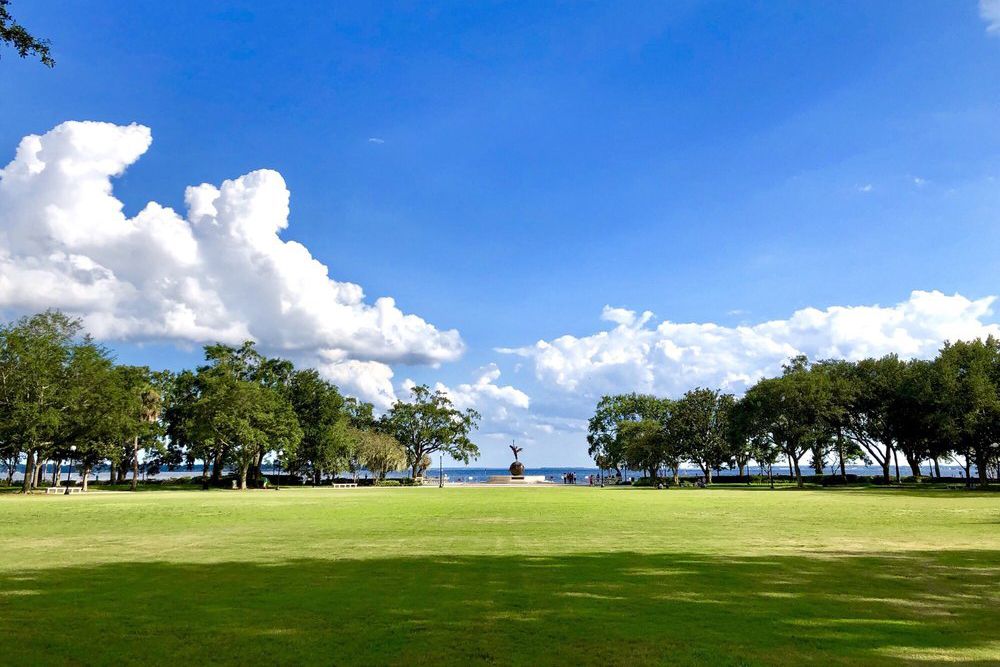
Jacksonville, Florida Memorial Park was created nearly a century ago by Olmsted’s sons, Frederick Law Jr. and John Charles, as a 6-acre refuge along the St. Johns River honoring 1,200 Florida men and women who lost their lives during World War I. It became one of the premier public spaces in Jacksonville’s hip Riverside Avondale National Historic District, attracting walkers, joggers, in-line skaters, and bikers (and yogis every Sunday).
Don’t Miss: The bronze sculpture “Life” by Charles Adrian Pillars, designed to present the idea of life, its struggle, and its victory.
Piedmont Park
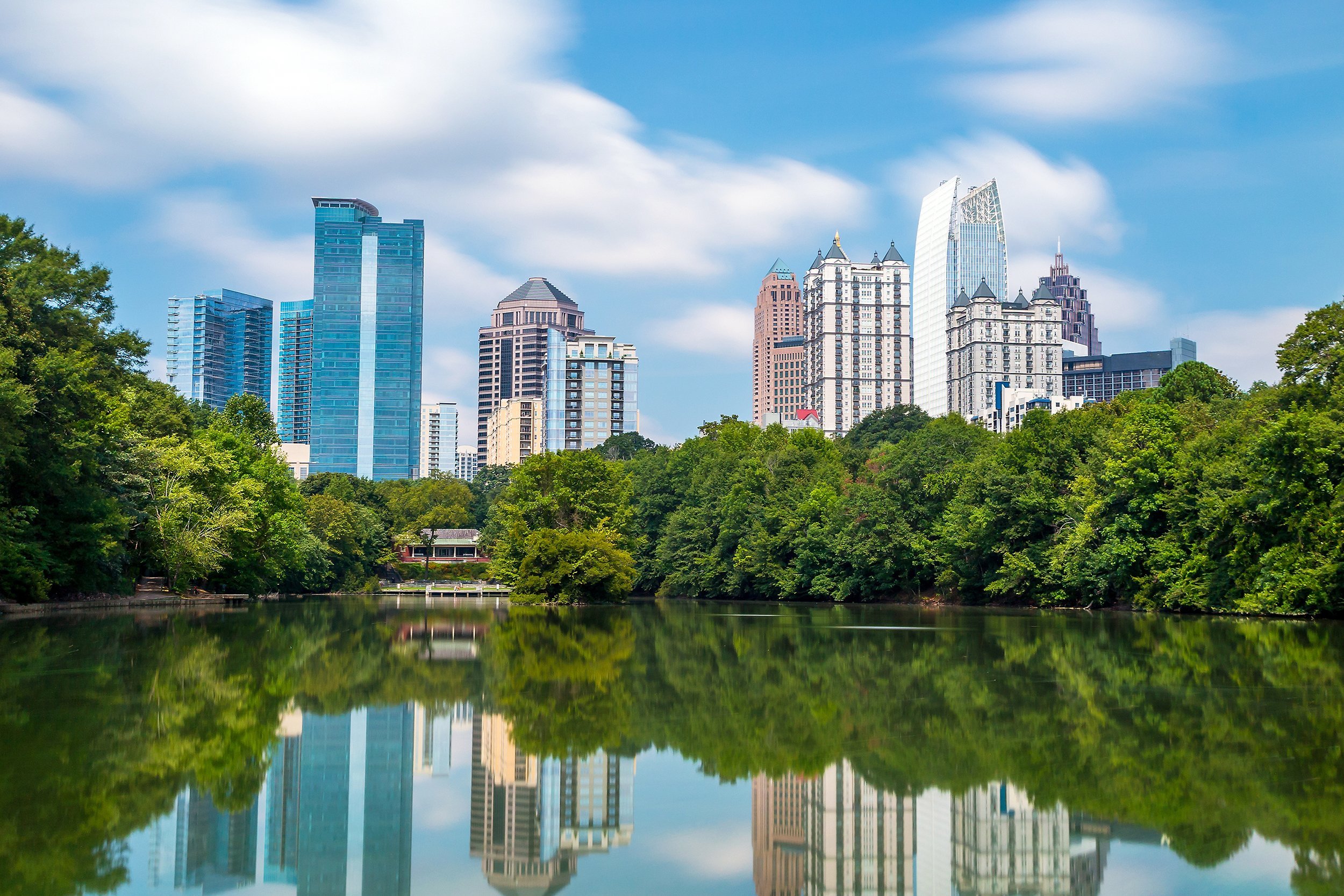
Atlanta Providing much-needed green between trendy Midtown and the Virginia Highlands neighborhood, Piedmont Park began in the 1800s as a gentleman’s farm but was transformed by the Olmsted brothers. Today the 211-acre park includes covered tennis facilities, a dock, and two playgrounds, among many other features.
Don’t Miss: The thriving Education Garden, which teaches hundreds of children each year about natural and organic gardening methods.
Boston Common
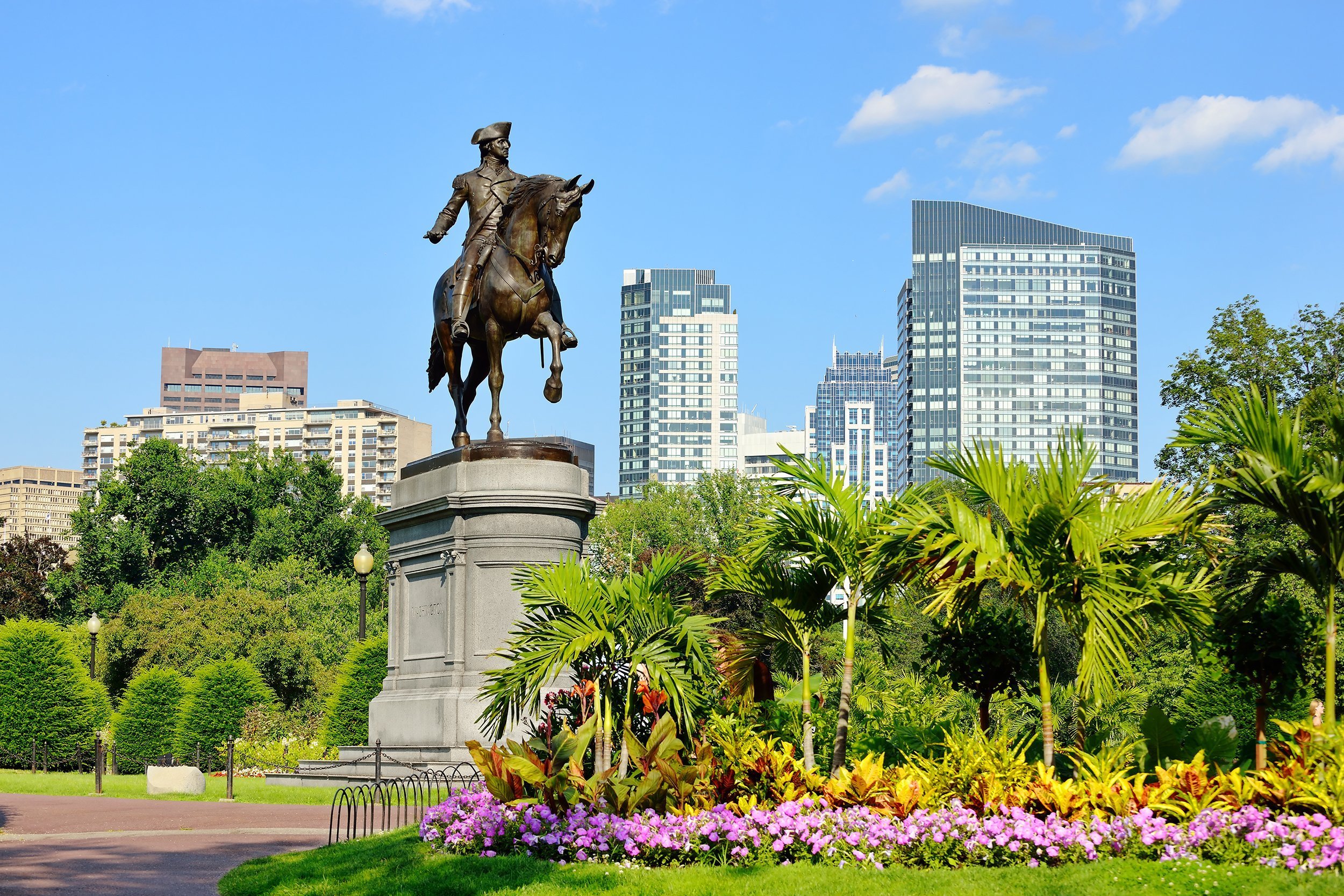
Boston Boston Common dates back to 1634 and served as both a Revolutionary War muster location for the colonial militia and the site of an eight-year British camp. Today the park continues its prominent role as gathering place for locals and visitors. It has ball fields, a “tot lot,” and a neighboring Public Garden with swan boat rides.
Don’t Miss: Frog Pond, which provides winter skating and a summer spray pool for children.
The Lawn on D
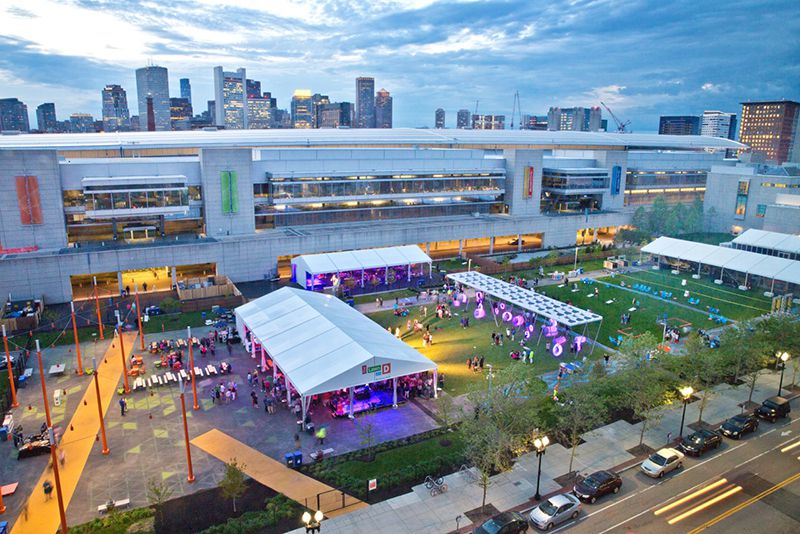
Boston In historic company, the Lawn on D is very much the new kid on the block. But the first-of-its-kind, award-winning space by the Boston Convention & Exhibition Center has become a popular retreat in the South Boston Waterfront District. It includes pavilions with picnic seating; colorful Adirondack lounge chairs; free Wi-Fi; and seasonal outdoor games including bocce, table tennis, and cornhole.
Don’t Miss: Swing Time — swings outfitted with solar-powered LEDs that change color depending on speed and height.
Falls Park
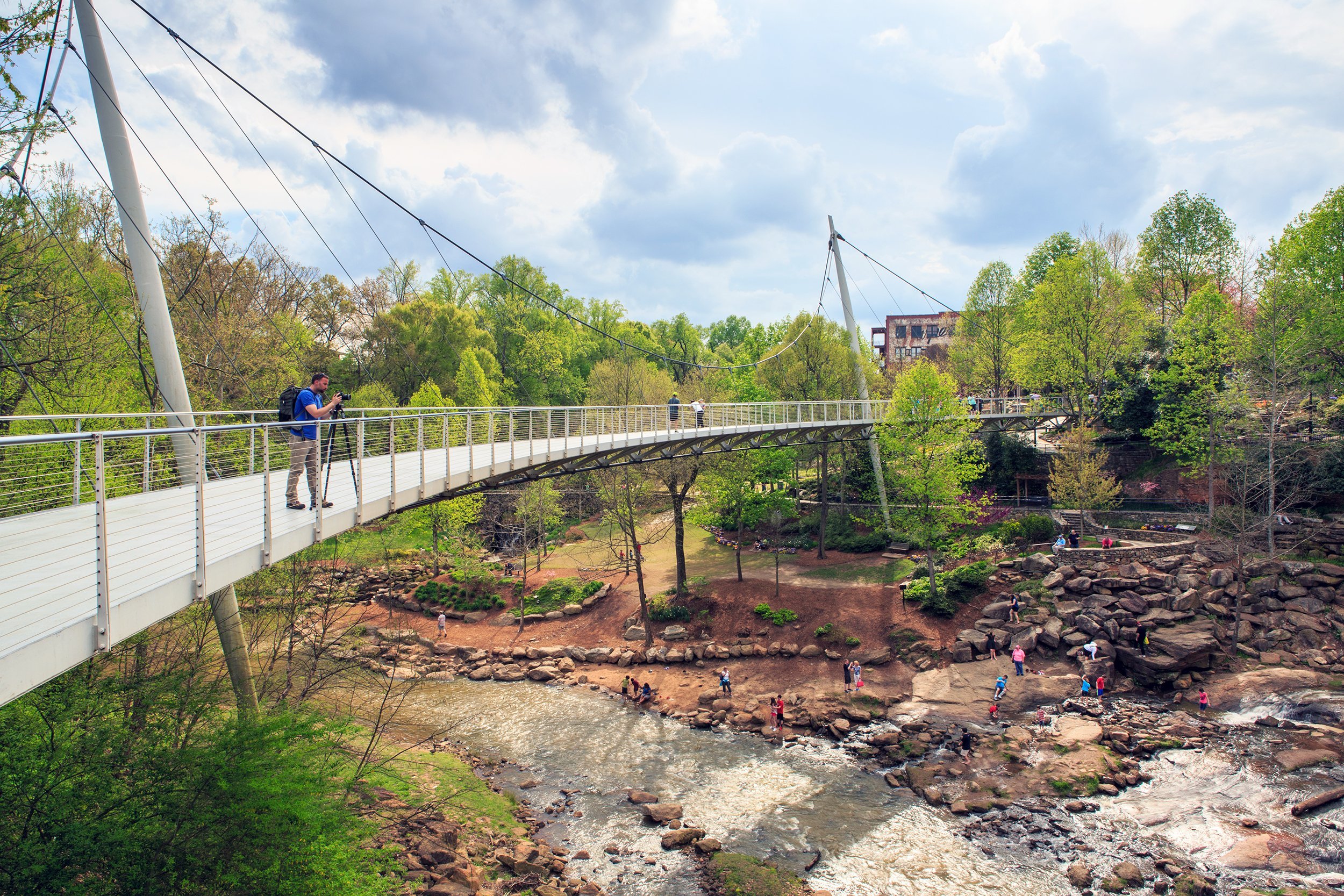
Greenville, South Carolina A 32-acre oasis in downtown’s historic West End, Falls Park includes scenic overlooks, a waterfall, public art, nature trails, picnic areas, and gardens. There’s an outdoor amphitheater for free events such as Shakespeare in the Park and Moonlight Movies.
Don’t Miss: The 345-foot Liberty Bridge, which curves around a waterfall on the Reedy River, supported by cables on only one side for an unobstructed view.
Rock Creek Park
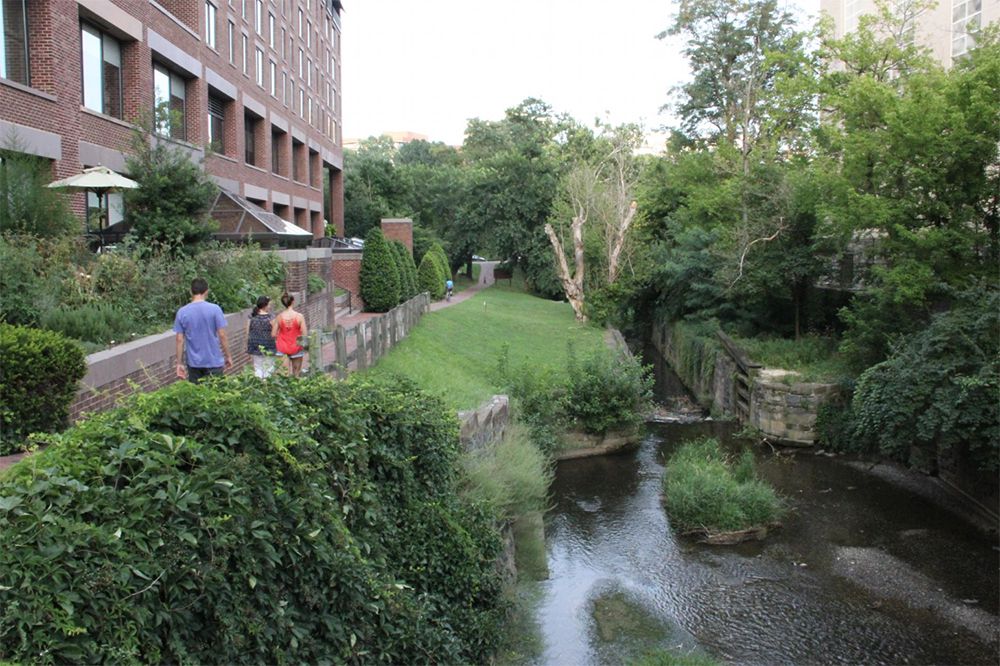
Washington, D.C. When most people think of the capital’s grand public spaces, they think of the National Mall and its monuments. But the lesser-known, 1,800-acre Rock Creek Park is nearby and particularly popular among locals, as home to the free Smithsonian National Zoo, an equestrian center, and miles of trails.
Don’t Miss: The planetarium — thanks to special software, visitors can gaze at images of night skies on the dome-shaped ceiling while park rangers talk astronomy.
Riverfront Park
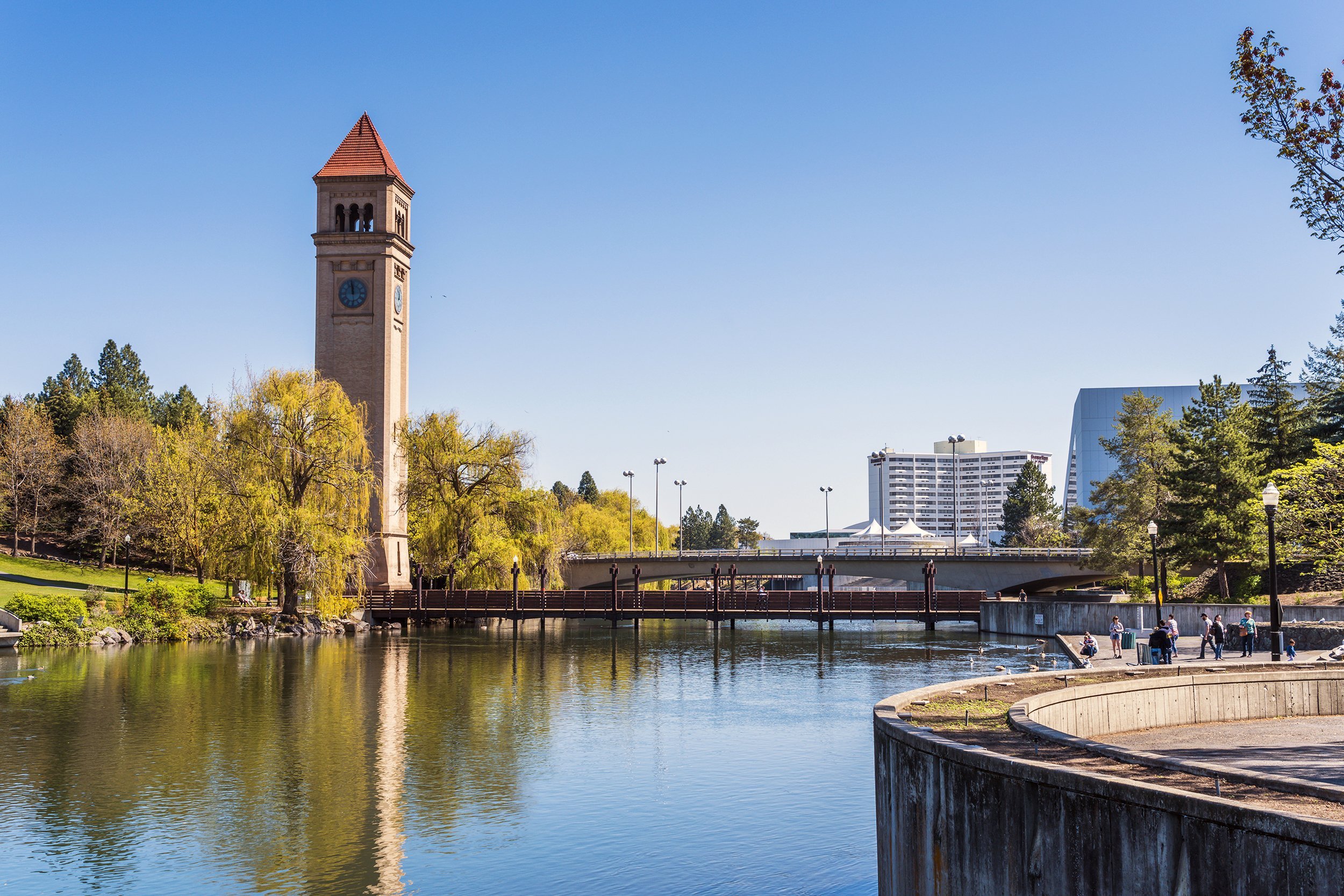
Spokane, Washington On the banks of the Spokane River in a busy downtown, this 100-acre park (now undergoing renovations in parts) includes Spokane Falls, a fountain, a sculpture walk, and the hand-carved 1909 Looff Carrousel.
Don’t Miss: The Spokane Falls Skyride (or gondola), which provides up-close views of the falls as well as the city skyline.
Forsyth Park
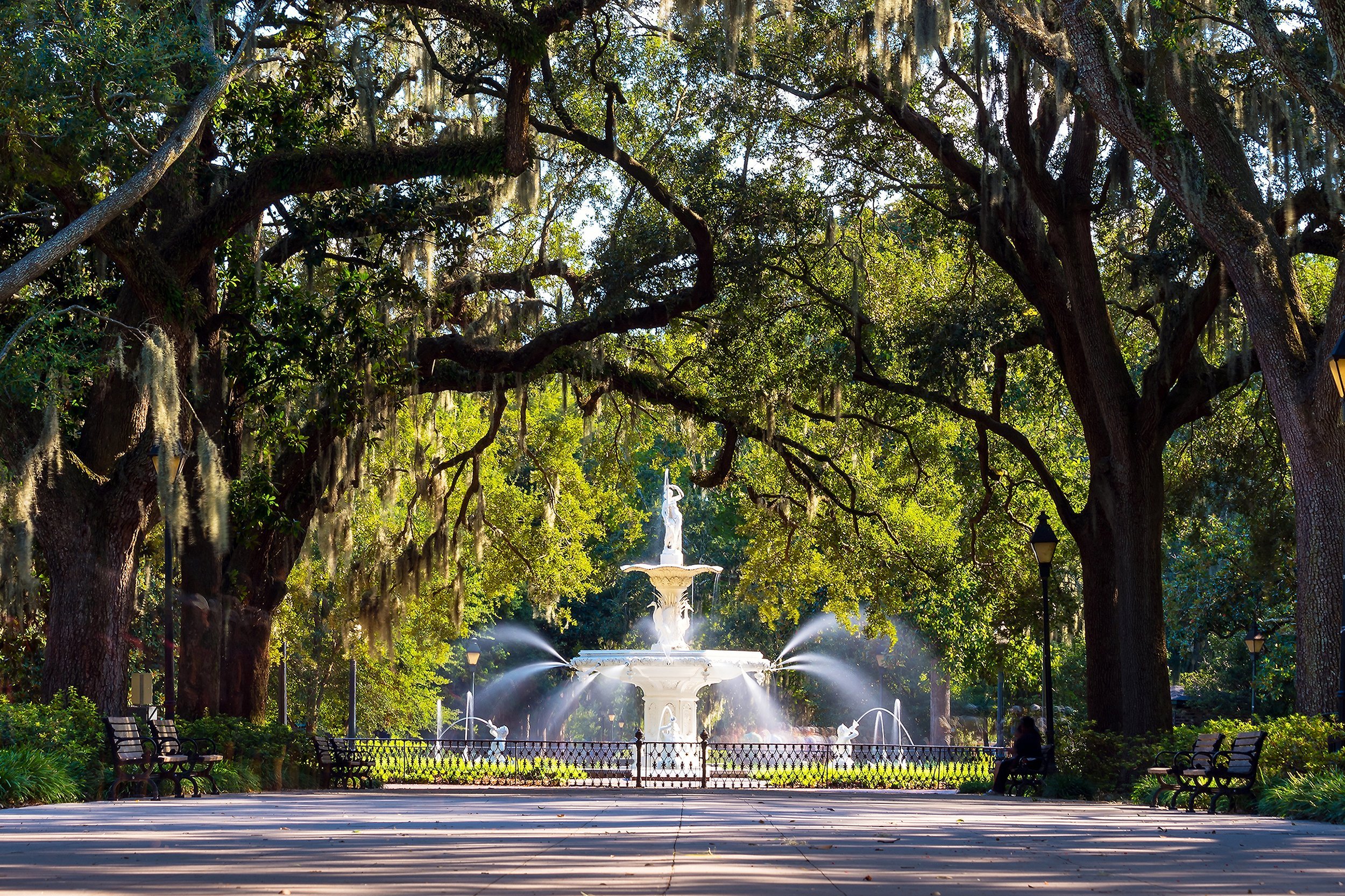
Savannah, Georgia Forsyth Park’s 30 acres serve as backdrop for concerts, sports, and sunbathing amid Savannah’s historic district. Foodies enjoy a Saturday farmers market.
Don’t Miss: The park’s most photographed feature, the Forsyth Park Fountain, which was built in 1858 and resembles fountains found in Paris and Peru.
Encanto Park
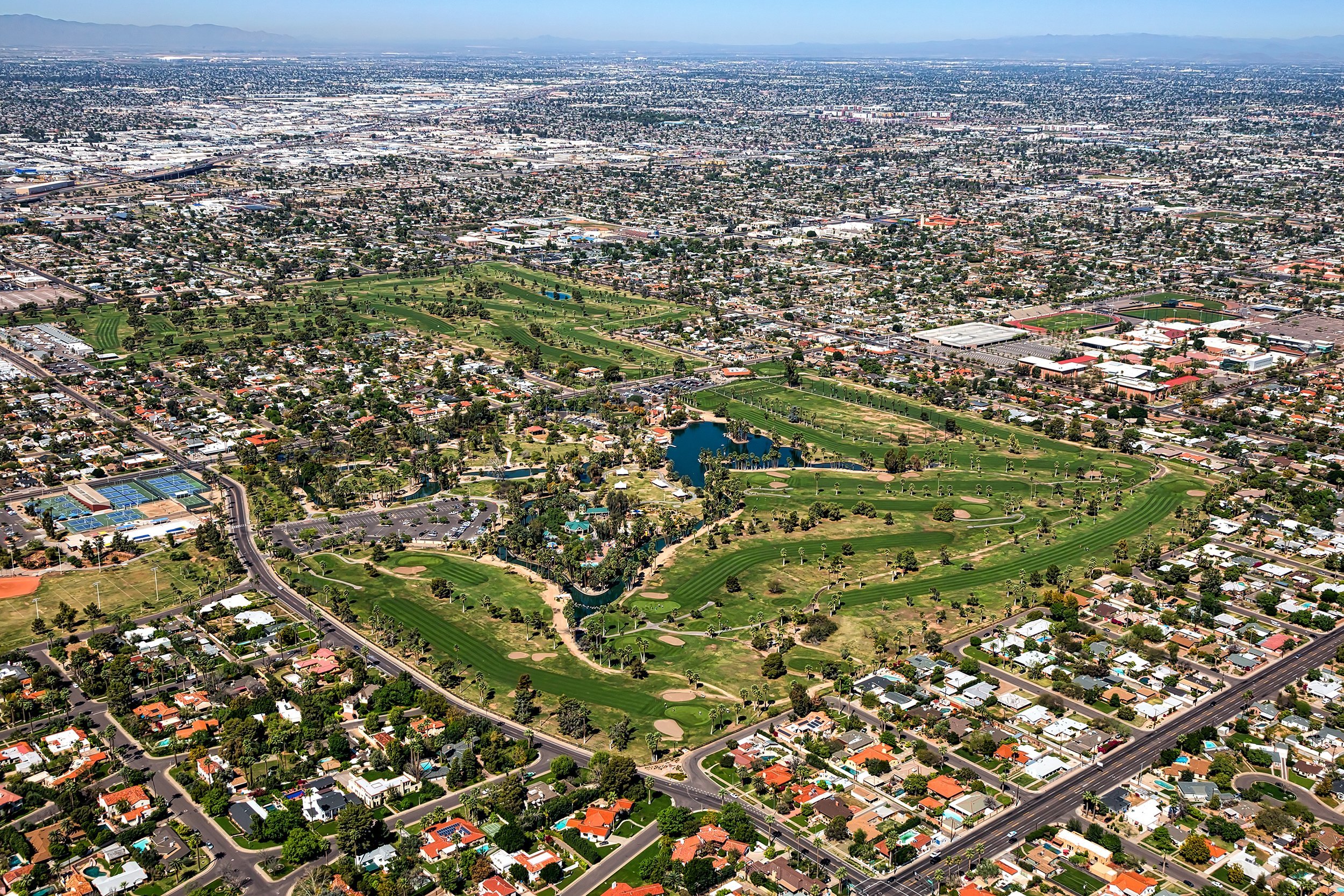
Phoenix Encanto Park’s 222 acres include picnic areas, a lagoon and fishing, a swimming pool, a nature trail, and two golf courses. There are also lighted sports facilities.
Don’t Miss: The Enchanted Island Amusement Park, with its 66-year-old carousel and C.P. Huntington Train.
Prospect Park
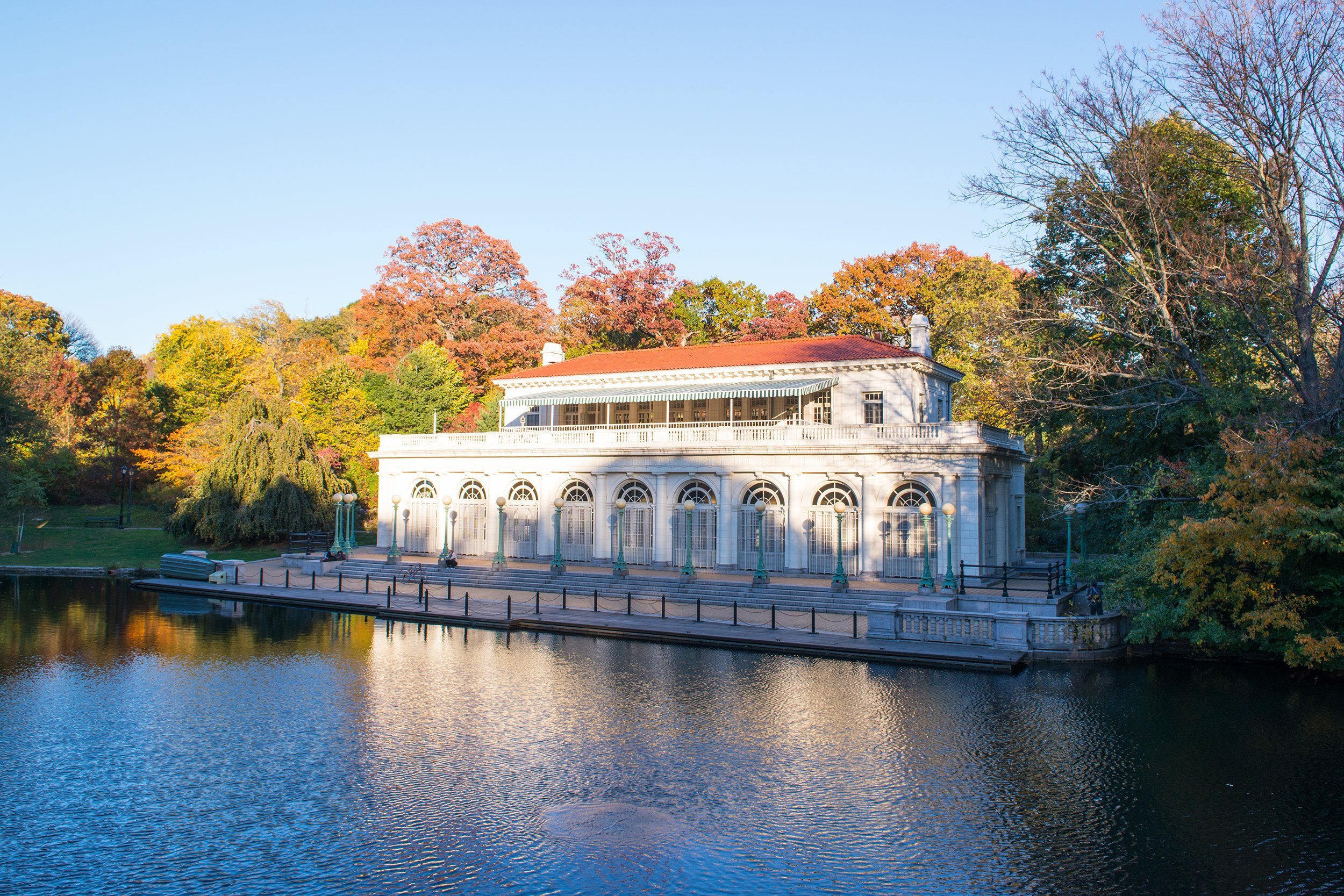
Brooklyn, New York Some say Prospect Park — another Olmsted creation — is better than Central Park. At 585 acres, it’s Brooklyn’s largest park, and activities include baseball, bird-watching, ice skating, boating, tennis, horseback riding, and fishing. There’s also a 90-acre meadow.
Don’t Miss: The Lefferts Historic House, built by a Dutch family in the 18th century, which includes a working garden, historic artifacts, and period rooms. Visitors can use traditional tools to make candles and churn butter.
Zilker Metropolitan Park
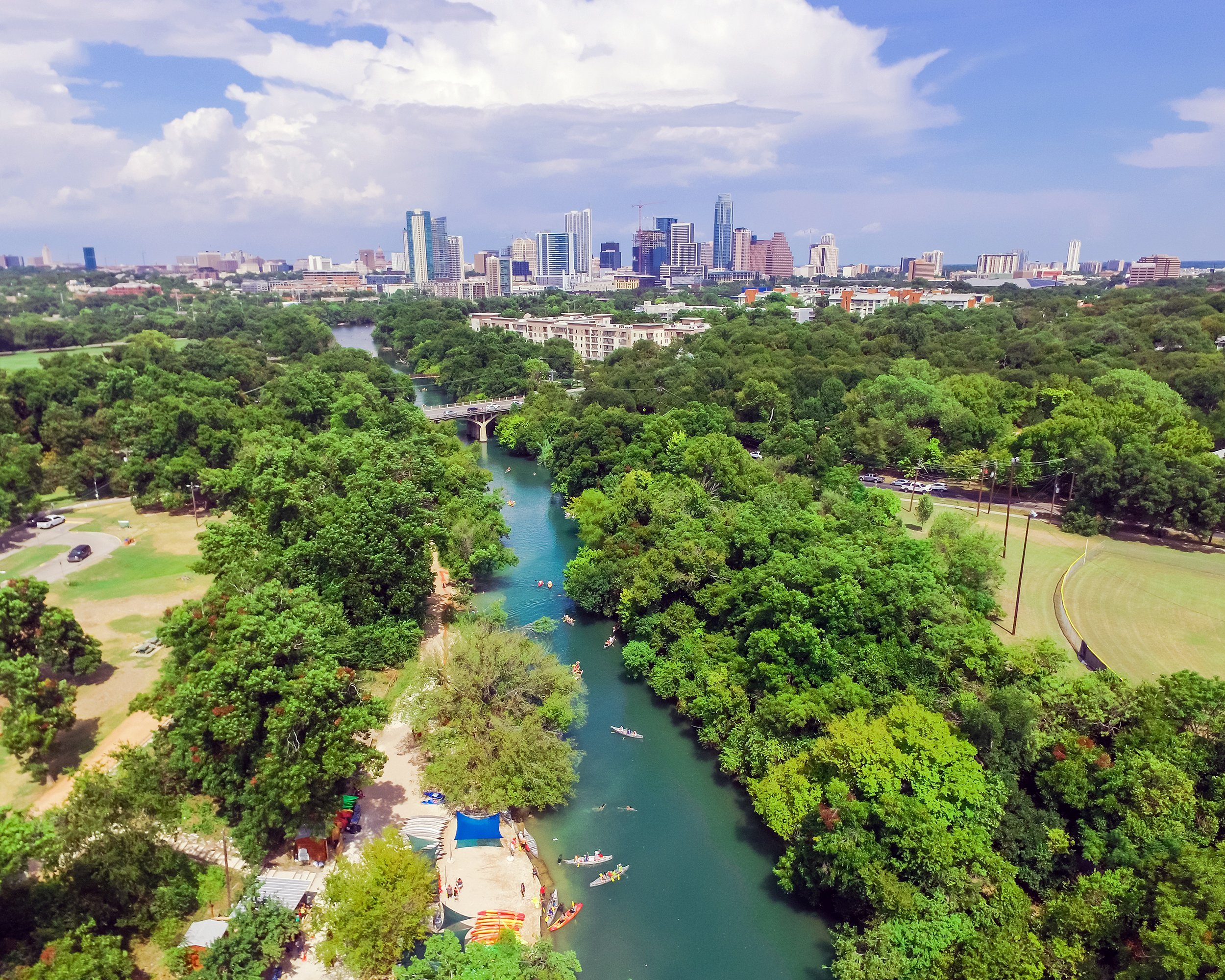
Austin, Texas Called the crown jewel of the Austin park system, Zilker is the result of three gifts of land from businessman, banker, and rancher Andrew Jackson Zilker starting in 1918. Highlights of its sprawling 351 acres include a spring-fed pool with a year-round average temperature of 68 degrees, botanical gardens, the Austin Nature & Science Center, and Zilker Hillside Theater.
Don’t Miss: A sculpture garden and museum showcasing work by the award-winning Charles Umlauf, whose art ranged from haunting expressionism to neoclassical realism and lyrical abstraction.
Humboldt Park
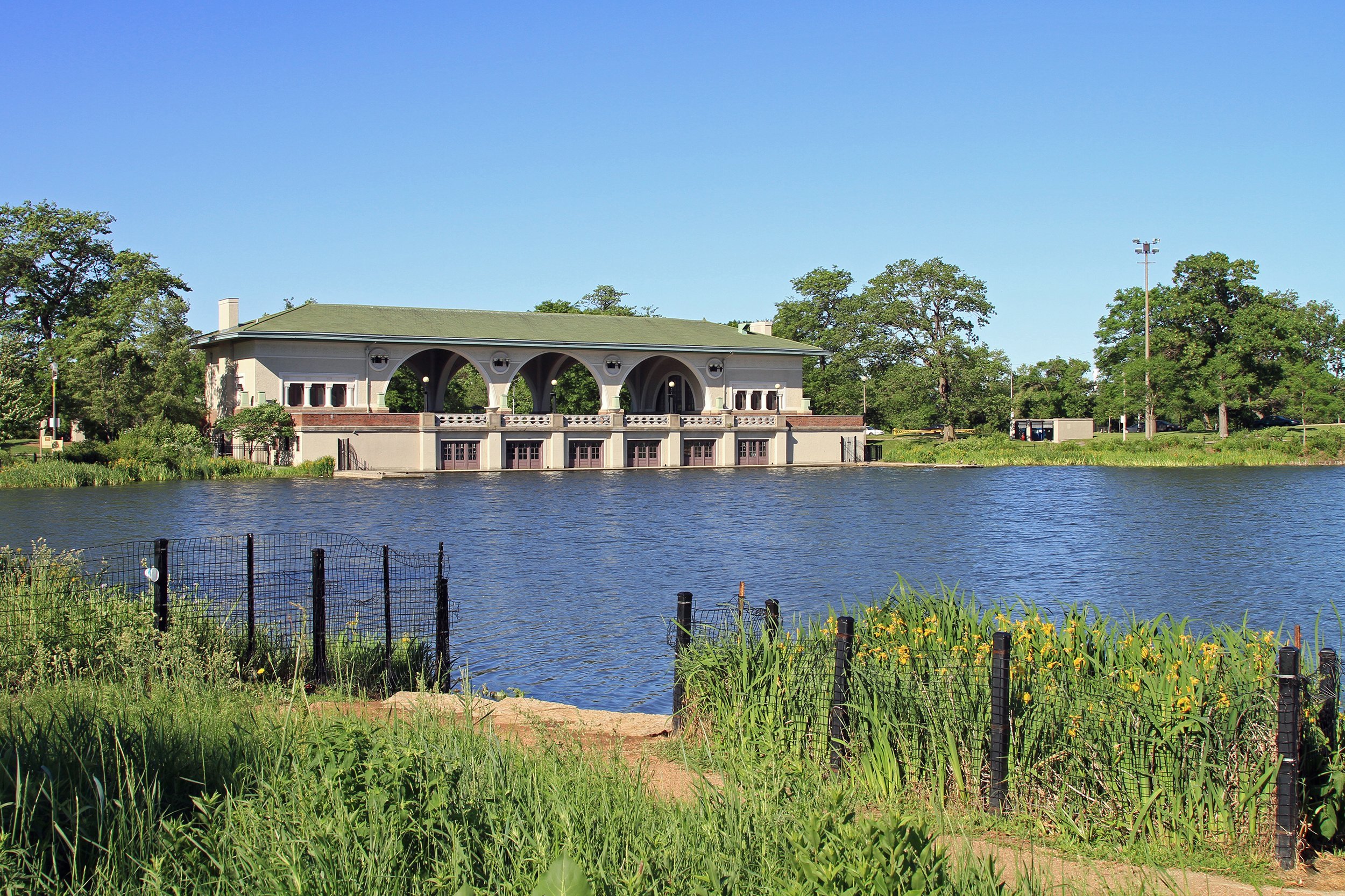
Chicago Humboldt Park’s 219 acres include soccer fields, baseball fields, tennis courts, a fitness center, two gyms, several playgrounds, a historic lagoon, a boathouse, and an inland beach. The park hosts after-school programs and, in the summer, a six-week day camp for children.
Don’t Miss: Little Cubs Field, a smaller replica of the Chicago Cubs’ Wrigley Field.
Patterson Park
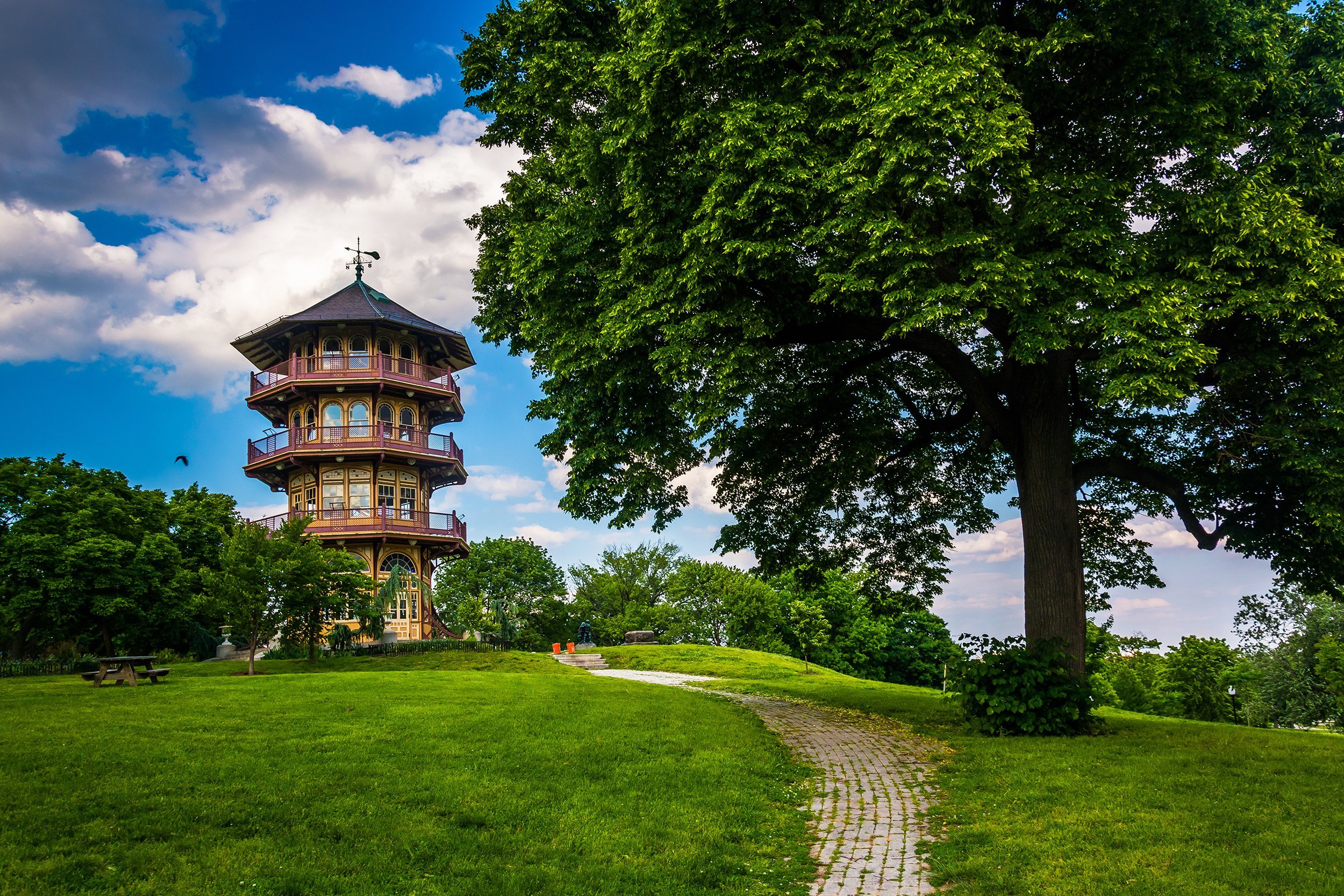
Baltimore Yet another park with an Olmsted touch, Patterson Park includes a boat lake, an ice skating rink, a swimming pool, and acres of outdoor space to stroll and picnic. It rivals Boston’s history-steeped public spaces with its 300-year existence — including its role turning back an 1814 British invasion.
Don’t Miss: The Pagoda, originally known as Observation Tower, which was designed in 1890 and provides views of downtown, the Patapsco River, and more.
Griffith Park
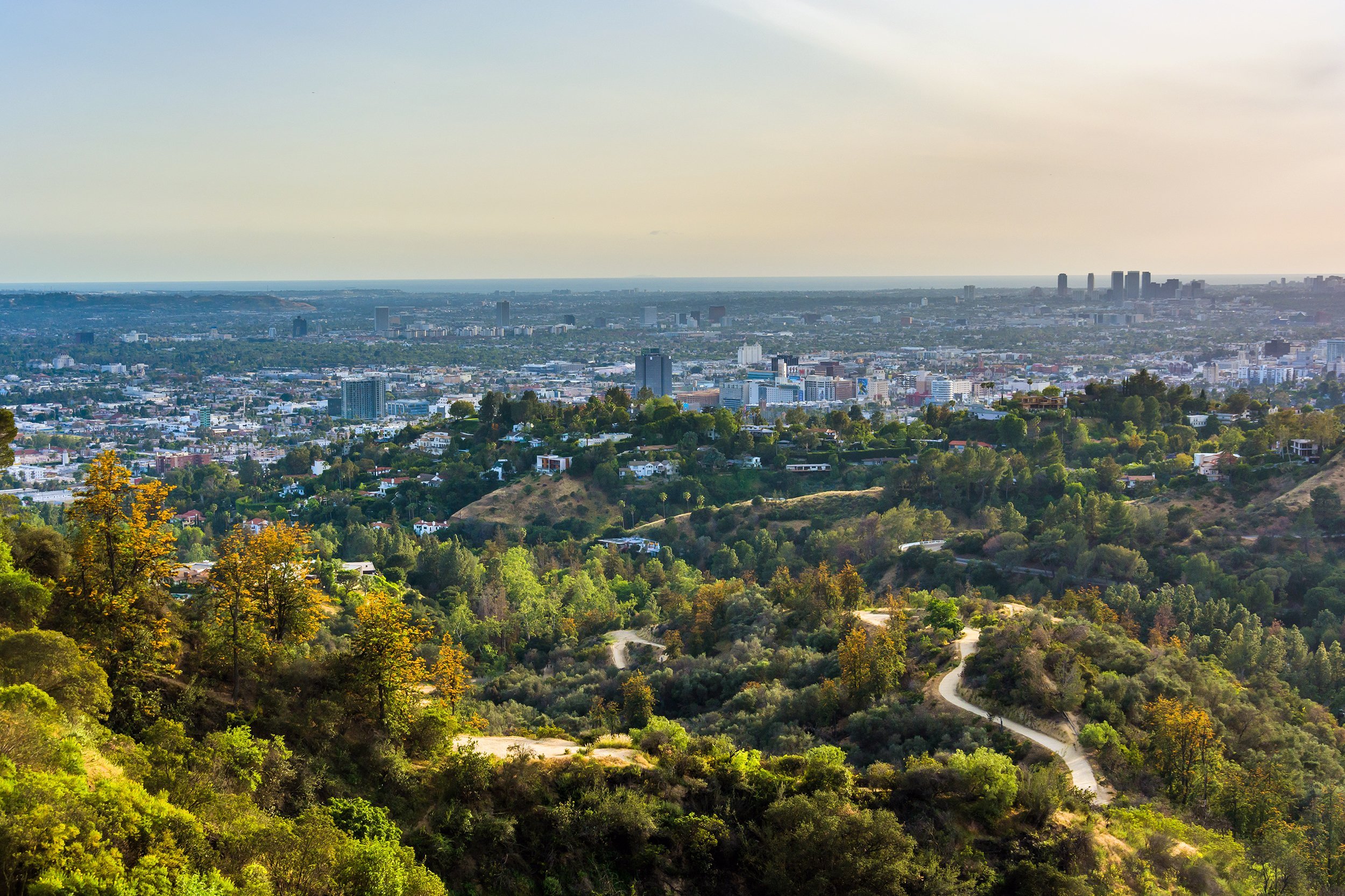
Los Angeles This untamed park abutting L.A.’s trendy Los Feliz neighborhood spans 4,310 acres, making it one of the largest urban parks in North America. There’s so much to see and do, it’s possible to spend several days visiting. There are 53 miles of hiking trails, a 55-acre camping space, a zoo, the Greek Theatre music venue, a seasonal swimming pool, and more.
Don’t Miss: The iconic Griffith Observatory, featured in countless TV shows and films, and its stunning view of the Los Angeles basin and downtown.
Buffalo Bayou Park
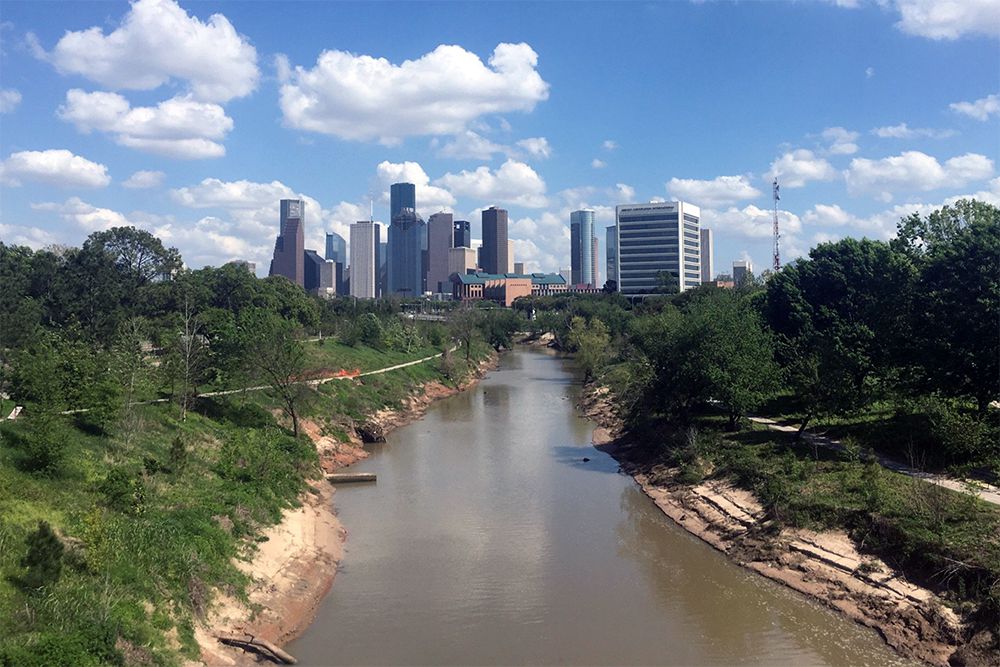
Houston This 160-acre park is considered one of the great urban green spaces in the U.S. (it’s one of five finalists for the Rudy Bruner Award for Urban Excellence), and it’s an excellent place for a jog.
Don’t Miss: The Cistern, one of Houston’s first underground drinking-water reservoirs. It was built in 1926 and decommissioned following an irreparable leak in 2007. Now the 87,500-square-foot space hosts period art exhibits.

